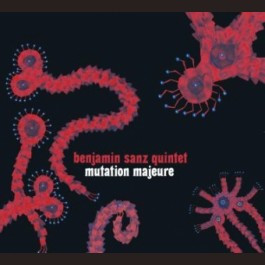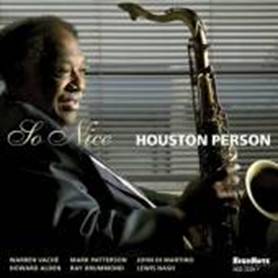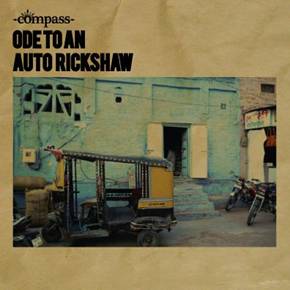by Peter Wockner
| Back to Index |
| 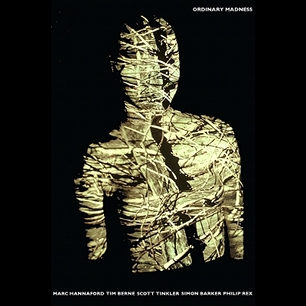 | Marc Hannaford - Ordinary Madness (Quintet) and Sarcophile (Trio) (Digital-only: www.marchannaford.com)
|
Twenty-nine year old Melbourne pianist Marc Hannaford is at the forefront of cutting edge contemporary improvised music. Hannaford’s diverse, musical eclecticism is illustrated in his selections for his final masters recital. He played works by Heinichen, Gesualdo, Elliott Carter, Bach, Messiaen, four of his own compositions, and a Thelonious Monk. Although Hannaford plays classical music at home, he breaks it apart, as a source for improvisational ideas
Ordinary Madness – a title from US writer Charles Bukowski (1920 - 1994) – aligns Hannaford with avant-gardist Scott Tinkler on trumpet, bassist Philip Rex, drummer Simon Barker and US saxophonist Tim Berne to embark on three lengthy tracks of completely unstructured, unedited improvisation. The music is abstract; the complete inverse of easy listening, performed by highly talented musicians and demands the listener’s total attention. The performance relies on the autogenetic ideas of the participants and their ability to instantly collaborate, take an idea, a series of sounds, and utilise, enhance, expand and explore them to construct an overall result. Each of the three pieces moves through varying moods. Dolls opens with a dreamy alto sax, floating piano, and trumpet declamations, soon joined by bass and staccato drum statements evolving into rhythmic post-bop passages, climactic mayhem, abrupt decrescendos, introspective wandering and a gamut of expressionism. Anyone expecting a theme-solos-theme format might be bewildered, but careful attention to these inspired works of high-level, unfettered, group improvisation will be rewarded.
The trio album is a more orthodox collection of Hannaford originals with bassist Sam Pankhurst and drummer James McLean, both aged early to mid-twenties. The compositions are complex, cerebral, intricate, and swing mightily, often in a neo-classical way. Hannaford’s solos are skilfully constructed, meaningful excursions, not mere tracings of chord changes. Jack Hammerfordopens with typically unexpected melodic piano intervals, and deep dark chords precipitating rhythmic changes for exhilarating improvisations at varying speeds. Beginning with solo bass walking, Something We Know moves into polyrhythms as the piano states a jagged theme leading to increasingly speeding, convoluted runs, punctuated by drums. These albums deliver state of the art improvised music in two different settings: an unstructured larger group and in a more familiar, arranged trio setting
    
|
by John McBeath
Previously published in The Australian Mar 2012 |
| Back to Index |
| 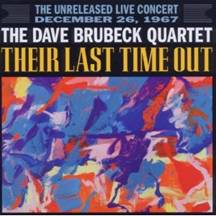 | Dave Brubeck Quartet - Their Last Time Out (Columbia Legacy 88697815622)
|
It’s a pity this final concert by the classic Dave Brubeck in the ballroom of the Statler Hilton Hotel in Pittsburgh, Pennsylvania on December 26, 1967 was not officially recorded by Columbia. If the sound had matched that of the quartet’s finest live recording, the 1963 Carnegie Hall concert, this would have been a set to treasure. It was recorded monaurally on tape which was found gathering dust in the Brubeck household a few years ago. Despite the uneven mix, Paul Desmond’s alto saxophone is slightly under-recorded at times as is Eugene Wright’s bass, no serious Brubeck collector should be without this two-disc set which again highlights the remarkable interplay between the pianist and Desmond counterbalanced by the rhythm generated by Wright and Joe Morello’s drums. A romping St Louis Blues sets the scene in which there are no great surprises but an air of excitement as the four enjoy this historic event which would end 10 years of playing together. Take The A Train, a Brubeck favourite, sizzles as does the rousing Someday My Prince Will Come and there is the contrast of the Mexican folk song La Paloma Azul noted for Desmond’s flowing lyrical lines. It ends appropriately with Take Five
   
|
by Kevin Jones
Previously published in Limelight March 2012 |
| Back to Index |
| 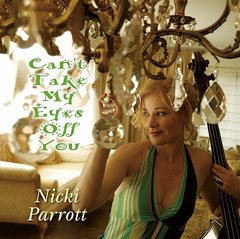 | Nicki Parrott - Can’t Take My Eyes Off You (Venus Records VHCD 1057)
|
Newcastle-born Nicki Parrott is a rarity, a first-class bass player who is also a vocalist. And she sings very well as her previous recordings with pianist Rossano Sportiello and those for this Japanese label have shown. In her latest album, recorded in March last year, with a melodic emphasis she again restyles some of the great standards (Gershwin, Berlin etc) and music by Burt Bacharach, Tony Hatch and Willie Nelson. She is again admirably backed by tenor saxophonist Harry Allen and pianist John DiMartino with Chuck Redd’s vibes a welcome addition. And the bass playing is spot on too!
   
|
by Kevin Jones
Previously published in Limelight March 2012 |
| Back to Index |
| 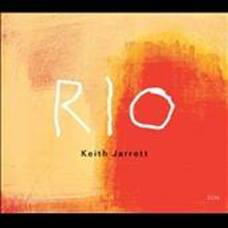 | Keith Jarrett - Rio (ECM 2198/99)
|
Jarrett was once quoted as saying “If you make a map of something, and that map isn’t changeable, you’re stuck with the map. For driving, that’s good, but for music, I’m not sure”. Jarrett’s solo live recordings have tended to concentrate in Europe, Tokyo or New York but this album was captured in Rio de Janeiro April 2011 and, like Tokyo’s Radiance, Jarrett’s performance is deplete of preconceptions. Each piece is entitled Rio Part I - XV and averages six minutes in length over two discs . Previously afraid to lose the flow of his music, these days Jarrett knows when a song is complete and each is around six minutes in length. This is spontaneous creation of song and Jarrett is in a spirited mood. Rollicking bass grooves underpin funky vamps or wandering lyricism cleverly interspersed with rising melodies which overwhelmingly delight the audience. Each phrase is sublimely reconciled then bridged into the next crescendo
    
|
by Peter Wockner
Previously published in Limelight February 2012 |
| Back to Index |
|  | Nick Haywood Quartet - 1234 (Jazzhead HEAD 147)
|
Amongst many career highlights, Haywood, the bassist of the trio that produced one of the definitive Australian recordings Sudden in a Shaft of Sunlight in 1998 has chosen Stephen Magnusson guitar and Colin Hopkins piano with stalwart Allan Browne on drums. Each had their own troubles prior to the session which might explain the melancholia but the sublime interaction, spontaneity, minimalism and the choice of material makes this a must have disc to wash away the blues. Four originals and significantly Jimmy Webb’s broodingly beautiful ‘The Moon’s a Harsh Mistress’ and the country tinged ‘Blue Eyes Crying in the Rain’ were both one takes.
   
|
by Peter Wockner
Previously published in Limelight February 2012 |
| Back to Index |
| 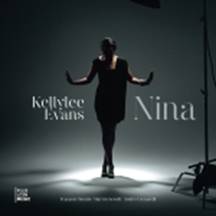 | Kellylee Evans - Nina (Plus Loin PL4528)
|
One of the few tribute albums in recent times that walks the fine line of respect for the icon without compromising one’s individuality. A previous Monk Institute finalist, the Canadian’s third album doesn’t include My Baby Just Cares for Me or Mississippi Godamm but there is no mistaking the intent. She uses Cassandra Wilson guitarist Marvin Sewell and Dee Dee Bridgewater drummer Andre Ceccarelli in vocal territory trail blazed by Wilson and Betty Carter with hints of Holiday phrasing. Amongst several highlights is the most haunting re-arrangement of Mood Indigo I’ve heard. The very clean bass of Francois Moutin epitomises a fine album.
   
|
by Peter Wockner
Previously published in Limelight February 2012 |
| Back to Index |
|  | Ella Fitzgerald - S’Wonderful: Ella in Japan (Verve B001530502)
|
As far as jazz singing is concerned this is the best Ella Fitzgerald on disc, even surpassing the award-winning four-CD set Twelve Nights In Hollywood. Here is the supreme female popular and jazz vocalist of the last century at her peak before a rapturous audience in two concerts in Tokyo in January, 1964 with a quartet led by trumpeter Roy Eldridge, showcased on four tracks, and Japanese musicians. Originally planned as a follow-up to the Grammy-winning Ella In Berlin under the title Ella In Nippon, the project was canned by her manager Norman Granz because of the surfeit of Ella material about to be released. The master tapes lay gathering dust for 47 years, but what a treasure trove including a stirring S’Wonderful partly sung in Japanese. By personalising I Love Being Here With You early she sets the scene for two nights of great jazz singing
    
|
by Kevin Jones
Previously published in Limelight February 2012 |
| Back to Index |
| 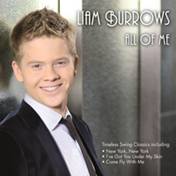 | Liam Burrows With John Morrison’s Swing City - All of Me (LB01)
|
It reads like the script from something like the 1939 MGM musical Babes In Arms. Talented teenager leaves school to find himself singing with a swinging jazz orchestra of the highest class in an impressive recording debut. What is more remarkable is that Liam Burrows has love for the music of Sinatra and the great standards in an age where public taste is governed by the pop industry. But he knows how to swing and can really belt out a song. Minor flaws in his diction, phrasing and dynamics will be ironed out with maturity. And remember he’s only 17!
  
|
by Kevin Jones
Previously published in Limelight February 2012 |
| Back to Index |
| 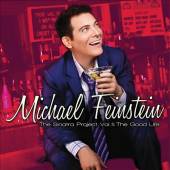 | Michael Feinstein - The Good Life: The Sinatra Project, Volume Two (Concord Jazz CJA 330-02)
|
Michael Feinstein, the leading custodian of The Great American Songbook, continues his homage to the greatest male interpreter of the popular song but whereas in the first volume he concentrated on Sinatra’s great years in the 1950’s and before, here it’s Frank’s Rat Pack days of the 1960’s including numbers associated with Dean Martin (Sway) and Sammy Davis Jnr (For Once In My Life). The 30-piece orchestra under the direction of arranger-producer Bill Elliott backs him impeccably. The bossa nova-inspired The Way You Look Tonight is a gem but the urbane singer-pianist is at his best and most intimate accompanying himself on a poignant I’ll Be Around.
   
|
by Kevin Jones
Previously published in Limelight February 2012 |
| Back to Index |
| 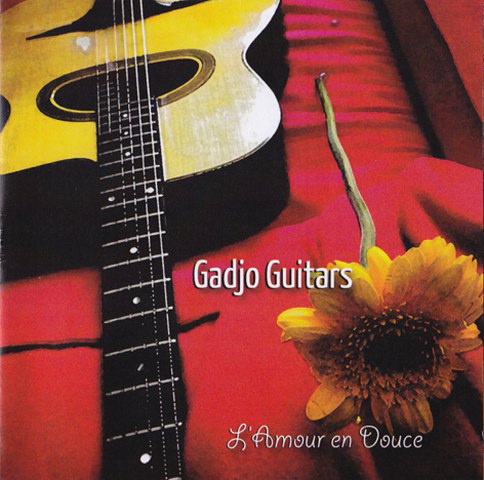 | Gadjo Guitars - L’Amour En Douce (Independent http://gadjoguitars.com)
|
In an age where we really don't feel we can trust our senses anymore – Photoshop tricks our eyes, Pro-Tools and AutoTune bamboozle our ears – it is no surprise that music fans are turning to more acoustic, rootsier forms of music for a thrill that can only be enjoyed first hand. The less production steps between the musician’s instrument and our minds/hearts, often the better. The recent resurgence of Gadjo (or Manouche) music – Gypsy Jazz, mon ami! ¬– is one example where intimacy and immediacy pay off in spades, emotionally and viscerally.
The trade-off of course is that there is little or no studio retouching required or even desired – the artist has to get it right, in the moment, to capture all the charm and life in the music as it rushes by. And with a music as technicially demanding and virtuosic as Manouche Jazz it is a rare artist that can pull it off with a (gallic) smile on his face.
Sydney’s Gadjo Guitars feature well-known Sydney virtuoso Nigel Date who has made jaws drop for a while now whenever he plays a solo or duo show. Nigel is joined by Jose Zarb and Cameron Jones – all three playing the peculiar wide-mouth manouche guitar. Their debut album is called L’Amour En Douce and it is a gem, containing all the charm and artistry that this French form of jazz is known for.
The towering figure of Manouche Jazz (and French jazz in general) is Django Reinhardt – an illiterate gypsy with a damaged fretting hand who made everyone who ever heard him sit up and take notice. The GGs open with Django’s ‘Douche Ambience’ and pepper the repetoire with his classics – ‘Nuages’, ‘Djangology’ and a particularly spry take on Django’s ‘Dinette’. Standards such as ‘Le Feuilles Mortes’ (known outside of Montmartre cafés as ‘Autumn Leaves’) and ‘Summertime’ are there but tastily arranged and used as musical material for the three guitarists to have some good Gadjo fun with.
What Stan Valacos and Nigel Date’s production has got so right with this is they have retained a very ‘live’ feeling to the performances. Each of the cuts feels nice and immediate – string squeaks, a couple of almost-flubbed notes and some slightly ragged endings are all included. Over-production such as reverb and extensive EQ or compression are eschewed in favour of immediacy. The vibe very much reminds me of ‘The Pizza Tapes’ of a few years back – the LP The Grateful Dead’s Jerry Garcia made with bluegrass buddies Dave Grisman and Tony Rice. A very different style but just the same afternoon haze – three friends getting together to make some music; it could be in your lounge room.
The rhythm-guitars chop away with a grinning swing as the melodies and solos are passed around between Date, Zarb and Jones. The whole thing has a real feeling of joie d’vivre to it. This music is irresistible and holds enough dazzling virtuosic runs and effects – check out the chiming harmonics in Django’s ‘Sweet Chorus’ – to keep the guitar-freaks out there happy (and practicing). I know I am.
   
|
by John Hardaker
|
| Back to Index |
| 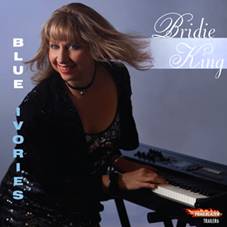 | Bridie King - Blue Ivories (Trailblazer)
|
Sydney pianist Bridie King is well known for her bluesy, New Orleans pianistics over more than thirty years in such bands as The Hippos and The Boogie Kings, plus two earlier albums. Right from the jump opening of Memphis Slim’s Nat Dee Special, the style and exuberance of authentic Barrelhouse, Blues, and Boogaloo piano leaps out from these thirteen tracks, including two of King’s originals. With Mike Rix on acoustic bass – slightly under-recorded – and Toby Hall’s dynamic, synch-perfect drums, King’s piano stomps joyously with its signature shuffle beat. Pat Powell adds his raw vocals to two numbers: the classic Down The Road Apiece as the piano rolls it along, and less powerfully on Ain’t There Something Money Can’t Buy? A slower, more reflective number is an instrumental Blue Moments digging deep into historical blues phrases and featuring a better recorded bowed bass sequence, while Professor Longhair’s Willie Fugal’s Blues raises the tempo with a rumba rhythm. An unexpected inclusion is Donovan’s sixties hit Mellow Yellow, where King drives the tune along with a strutting feel. River Is Waiting is a masterful exercise, painting a picture of blues-soaked nostalgia. None of this is new music, but King has a finely honed technique with a perfect grasp of the early southern US piano idiom and plays it with exhilaration and ineluctable swing
   
|
by John McBeath
Previously published in The Australian Feb 2012 |
| Back to Index |
| 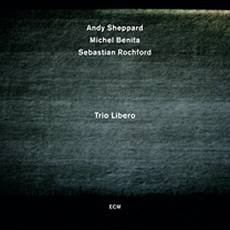 | Andy Sheppard, Michel Benita and Sebastian Rochford - Trio Libero (ECM/Fuse)
|
This second album for the fabled ECM label by UK saxophonist Andy Sheppard’s new trio continues his cool, lyrical style on tenor and soprano saxes. With French bassist Michel Benita and genre-spanning UK drummer Sebastian (“Seb”) Rochford the trio plays originals, group improvisations and one standard: I’m Always Chasing Rainbows. That familiar tune is delivered at an ultra-slow tempo in deliciously drawn-out soprano phrases that, with beautiful sensitivity, verge on the edge of falling out of time, in the breath-holding spaces between measures. After the melodic statement from Sheppard accompanied by an occasional, understated brush from the drumkit and a perfectly contained, smouldering undercurrent from Benita, the bass takes up the theme as the soprano softly filigrees. The fragile mood is sustained throughout thirteen tracks, opening with Sheppard’s Libertinoon tenor with an incisive but lyrical attack and accessible, melodic improvisation. Benita’s composition Ishidatami leads with the bass in an eastern modality and Rochford’s well-placed hand drumming ahead of the soprano’s weaving of a pausing, ever so slightly echoey narrative. The one track by Rochford, Lots of Stairs moves through several moods from the drum footsteps beginning to a restrained tenor theme punctuated by brushes, growing into a climax then a decrescendo. The album is yet another superbly recorded and produced by the incomparable Manfred Eicher
    
|
by John McBeath
Previously published in The Australian Feb 2012 |
| Back to Index |
|  | Maggie Britton - Ditto – Songs for Alexander (Oak Records)
|
Gold Coast-based vocalist Maggie Jodrell Britton has a career spanning more than forty years, appearing regularly on Brian Henderson’s TV Bandstand in the sixties and touring extensively around the globe. Her 1981 Royal Command Performance in London ranks as a career highlight and she has had numerous hits, including Come on Down, Morning Dew, and the country classic Reuben James. This recent collection – Britton’s first recording in 30 years – of twelve standards are all, except for two, taken at slow ballad tempos. They are delivered in a professional, straightforward smooth-jazz style with a dash of Broadway Musical and perhaps an occasional overuse of sweeteners in some of the recipes. Nevertheless, these are sumptuous orchestral arrangements by Roberto Merlini with Gold Coast musicians, and Britton retains a wide vocal range with the ability to hold a long high note, such as the last one in an ultra-slow Ain’t Misbehavin. She also uses a controlled vibrato to good effect. One of the most successful of these time-worn classics is Gershwin’s The Man I Love performed with expressive taste; another is a tenderly interpreted Our Love Is Here To Stay. And the dedication to ‘Alexander?’ He’s a friend and a fan of the singer’s live performances who asked for some of her music to play in his car
  
|
by John McBeath
Previously published in The Australian Feb 2012 |
| Back to Index |
| 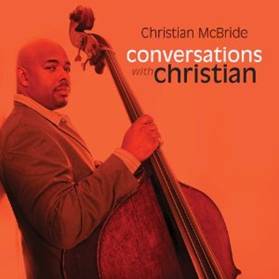 | Christian McBride - Conversations with Christian (Mack Avenue Records/The Planet Company)
|
Top-ranking US bassist Christian McBride is a man for all seasons, appearing on nearly 300 recordings with artists ranging from the jazz A-list, such as Freddie Hubbard and Pat Metheny, to classical and classical-fusion exponents, hip-hop, pop, and soul performers including vocalists Carly Simon and Sting. McBride’s latest is a thirteen track album of duets, featuring his excellent playing, with a variety of performers. The duo format deserves more jazz exposure with its intense one-on-one interaction, highlighting each player in a way that larger groups can’t achieve. Three vocalists are included: Sting singing a repetitive originalConsider Me Gone, and adding a few guitar chords; Dee Dee Bridgewater interspersing dialogue and scat with McBride and his swinging bass in It’s Your Thing; and the Beninoise, Angelique Kidjo, the best of the three, in a Congolese rumba, Afirika. Violinist Regina Carter plays Bach’s Double Violin Concerto which soon moves into a bluesy adaptation entitled Fat Bach and Greens, concluding with a straight classical rendition as McBride bows the bass beautifully. The most impressive of four pianists is George Duke’s fast-flowing interpretation of McBride’s McDukey Blues, although Eddie Palmieri’s energetic latino piano piece with huge chords is a welcome addition. Overall this album, though diversely novel, is overshadowed by McBride’s big band release The Good Feeling, just two months earlier
   
|
by John McBeath
Previously published in The Australian Feb 2012 |
| Back to Index |
| 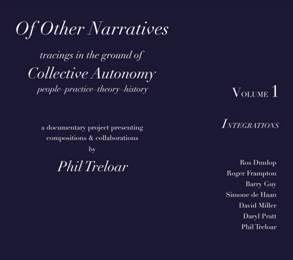 | Phil Treloar - Of Other Narratives (Volume 1 Integrations - www.feeling-to-thought.com)
|
These three pieces of around 20 minutes chart an almost circular journey of discovery for drummer/percussionst Phil Treloar. From 1976, an acclaimed Sydney Opera House improvisation with visiting spontaneous bassist and composer Barry Guy and enigmatic pianist Roger Frampton who was just as unique on the alto saxophone. Integrations 1 dates back to 1991 and explored the integrational relationship between notated composition and improvisation when Simone De Haan’s legato trombone strains, at times, resembled the didjeridoo, while Treloar’s fully notated Womb of Paradigm for bass clarinet and piano was so complex it’s hard to believe it was not fully improvised.
   
|
by Peter Wockner
Previously published in Limelight January 2012 |
| Back to Index |
| 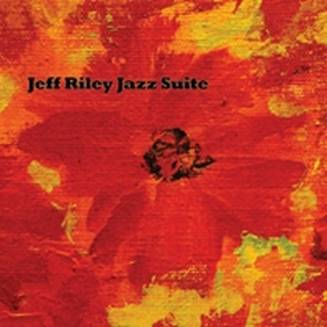 | Jeff Riley - Jazz Suite (Independent)
|
The Jeff Riley Jazz Suite is a project begun a decade ago in the US by the eponymous saxophonist. It’s a ten piece “little, big band” that, apart from performing original music around swing, funk and reggae styles, also supports music education for under-privileged children. The opener T for Tyka uses an interesting format, a twelve tone row: a melody that uses all twelve chromatic notes before any are repeated, and begins with a short vocal welcoming lyric from Kimberly Dawson. After that the instruments take over in swinging big band mode with a powerful brass section of four, plus three reeds, from which the leader emerges with a swing-era alto solo. The nostalgia is preserved with a Louie Bellson style drum solo preceding a tenor-led final chorus. The tempo drops a little for Mvmt II another swing piece featuring the strong trombone of Joel Timm. Reggae Soul, despite weak lyrics from the two vocalists uses a smart rhythmic drive from electric bass and drums, while another reggae-based track Time Shuttle, opening with an electric bass riff is more dynamically interesting with a lift-off trumpet solo from John Lake and big chords driving the ensemble. Swing beats the sing on this album – most lyrics are mundane – which is really one for the big band era aficionado featuring competent solos and period-evoking arrangements
  
|
by John McBeath
Previously published in The Australian Jan 2012 |
| Back to Index |
| 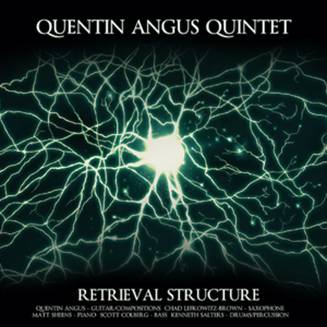 | Quentin Angus Quintet - Retrieval Structure (Independent)
|
Adelaide guitarist Quentin Angus, now New York based, is studying for his Masters with, amongst others, the legendary John Abercrombie, so it’s no surprise that Angus plays with a masterly technique. Added to that his guitar has a soft, mellow tone devoid of the sharpness favoured by some players and he solos with a constantly surprising creativity. The nine tracks recorded in New York for this debut album are Angus originals, often fluidly complex, cerebral in nature, but completely accessible. The opener, Coltrane Matrix, based on the changes from Coltrane’s famous Giant Steps begins with softly strummed guitar and the subdued piano of another outstanding ex-Adelaidean, Mathew Sheens. Then a fast, intricate, zigzagging theme is stated by guitar and Chad Lefkowitz’s tenor sax in unison, building then subsiding into floating solos from both instruments. The title track moves through various time signatures from 7/4 to 3/4 and a standard 4/4 giving a constantly moving rhythmic sequence of passages over which soprano sax, piano and guitar roll and manoeuvre impressively into theme or improvisation. The shortest track, Sentient opens with a smart, quick solo from drummer Kenneth Salters to introduce a post-bop theme for a driving tenor solo to climb to a high abrupt end after just under two minutes. These are refreshingly interesting and diverse compositions interpreted by a quintet of seriously accomplished young jazz players
   
|
by John McBeath
Previously published in The Australian Jan 2012 |
| Back to Index |
|  | Robert Burke Tony Gould Tony Floyd Nick Haywood - Live at Bennett’s Lane (Jazzhead)
|
This quartet of well-established Melbourne musicians was recorded over a twelve-month period from October 2009 at Bennett’s Lane. The six tracks are lengthy expositions of several standards and two of saxophonist Robert Burke’s originals. Cole Porter’sAll of You is given a gauzy, out-of-tempo interpretation at first with tenor sax gently meandering over Tony Gould’s rippling piano, gradually moving into a more passionate mode as the piano plays a staccato repetitive static harmony. Porter’s theme doesn’t emerge until around six minutes in, and later, after Nick Haywood’s bass takes up a single note reiteration, a satisfying release comes with the piano melody statement in big, extended chords. The original piece Pointilism, opens with jagged stopped sax notes accompanied by Tony Floyd’s unified drum shots aligned with piano and bass stabs, then establishes a vague, free-style structure which continues throughout as the track develops into dreamy, tempo-less terrain. The standard, Easy To Rememberopens with a flowingly pensive piano before the tenor sax arrives for a luscious interpretation of the ballad at an ultra-slow speed, underpinned by bass and drums as the piano segues into a more conventional backing. Tahdon, by Finnish saxophonist Jukka Perdo is a slow Nordic, atmospheric piece of beauteous harmonies and a journeying narrative, amply revealed by the piano opening, preceding the tenor’s sympathetic exploratory solo
   
|
by John McBeath
Previously published in The Australian Jan 2012 |
| Back to Index |
|  | Mike Nock Trio Plus - Hear and Know (FWM Records)
|
There are few, if any, on the Australian jazz scene who can equal the length and depth of experience as NZ born pianist-composer Mike Nock. He’s played with top US, Australian and European names, and led important bands, over a lifelong career. His compositions, recordings and performances in jazz and classical music have won many citations, including an induction into the Bell Awards Hall of Fame. This latest recording, adding to Nock’s collection of over thirty albums, features Karl Laskowski’s tenor sax and trumpeter Ken Allars, 20 year-old winner of the 2011 James Morrison Scholarship, plus the pianist’s long-standing trio. Ben and James Waples on double bass and drums respectively have accompanied Nock for ten years since they met at the Sydney Conservatorium where Nock still teaches, and where he also met Laskowski and Allars. This is a stellar quintet of four younger players led by a grand old master whose compositions and arrangements here are like a 21st century reinvention of the legendary works of Gil Evans for Miles Davis’s famous quintet of 1963 to 1965. A similar achievement to Evans’s luscious textures and understated themes is immediately evident in the title track, opening with a placid piano, unhurried yet authoritative with a gospel hint, as a slow rhythm emerges and the horns arrive with the theme majestically voiced. The arrangement continues with firstly a soft piano then added hushed horns underscoring a truly inspirational bass solo of singing intensity. If the composition ended here it would be impressive, but Nock orchestrates a final section in ¾ time, interspersed with bars in 5/4, starting in a stately Viennese Waltz manner then lifting off with joyous trumpet and tenor swinging hard in counterpoint before a soft-landing conclusion: just sublime. Each of the seven tracks is a different revelation, from the blasé ennui captured in Slow News Day to the upbeat post-bop excitement of Colours, or the trumpet tremolo and sax response beginning to a ‘birth of the cool’ style Komodo Dragon. All of the solos are not only talented improvisations; crucially they also embody the spirit and meaning of Nock’s melodies. The CD includes a booklet of high-class shots of the musicians recording by Melbourne photographer Gerard Anderson
    
|
by John McBeath
Previously published in The Australian Jan 2012 |
Hear and Know has all the classic traits that give reason to Nock’s now legendary status. With the addition of Karl Laskowski on tenor and Ken Allars trumpet, Nock has two energetic technicians and expressive voices complementing his deft touch on piano. The title track is a spare repetitive motif that’s as simple and joyful as it is melodic, underpinned by a hypnotic syncopated groove. The “Sibylline Fragrance” fills the senses with a beautifully intense and harmonically robust melody before Allars’ taut beaming tone makes way for Nock’s succinctly distilled solo.
Ben Waples underpins ‘Colours’ with an elastic walking bass line allowing Nock to explore freer and more rapid rhythmic figures and rhapsodic passages, randomly piercing the horn line with darts of block chord. “After Satie” has the ensemble wandering nomadically before the brilliant brightness of Allars drives the group’s momentum back to its origins. You can feel the sand underfoot when James Waples brush on skin shuffles the “Komodo Dragon” along before Laskowski skillfully enters into a dark dialogue with Nock who’s happy to oblige with harmonic commentary. Nock is playing with more authority now than ever yet it never intrudes on the subtlety of his music
    
|
by Peter Wockner
| Back to Index |
| 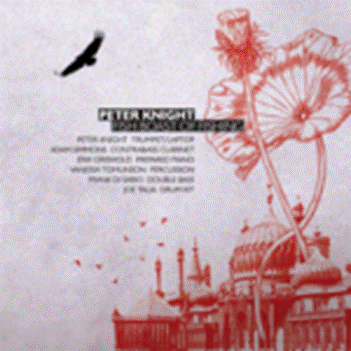 | Peter Knight - Fish Boast of Fishing (Listen Hear collective)
|
Melbourne trumpeter/composer Peter Knight, after successful recordings of his jazz/world music group Way Out West, has recently re-positioned his talents in far more abstract directions. Following the release of Residual, a duo album featuring Knight’s trumpet, various Vietnamese instruments and electronica, comes his latest work for six musicians – part structured, part improvised sonic experimentation. The odd title comes from a poem by avant US poet E. E. Cummings who experimented radically with syntax and poetic expression. Fans of Way Out West may be surprised at this stylistic departure from the previous idiom, although a couple of tracks contain an echo of Knight’s earlier trumpet work, notably in And Men Are Caught by Worms. That amalgamation begins with an almost frightening jumble of percussive, snorting, growling, tinkling effects followed by a silence then a restatement of those sounds in an aphasic rhythm as the trumpet arrives with long notes voiced with Adam Simmons’s contrabass clarinet seguing into mystical prepared piano by Erik Griswold and sinister acoustic bass notes from Frank Di Sario. Unknowness 1 opens in a more conventional way where the bass moves in a slow rhythmic two-note pattern under percussive effects from Vanessa Tomlinson and Joe Talia’s drumkit, blending with tremolos and effects from the prepared piano ahead of some quite beautiful slow trumpet and contrabass clarinet harmonies. Not for the faint-hearted
   
|
by John McBeath
Previously published in The Australian Jan 2012 |
| Back to Index |
|  | Marialy Pacheco - Songs that I Love (Pinnacles Music)
|
This third solo piano album from Cuban born, Brisbane-based Marialy Pacheco, features several standards, a couple of her own compositions, and several Cuban pieces. The music flows pleasantly with feeling in slower numbers such as her own ballad original Bremen, and surges with a Latin exuberance using fast-running passages against a chordal Cuban left hand in another original dedicated to her adopted home, The Sunshine State. Two Jerome Kern standards are included: a romantic interpretation of The Way You Look Tonight with quick melodic improvisations, and The Song is You taken at a faster clip with a constantly moving interchange between bass and fast-moving treble. The three Cuban pieces might have come straight from a solo piano at a resplendent dining room of classic 1940s Havana, most notably in Mambo Inn with its characteristic rhythms and hyper-fast runs breaking out to sweep across the keyboard. Tres Lindas Cubanas is a relaxing performance strongly imbued with a Spanish tinge and rhythmic stops that come close to missing a beat, but never do as the coursing melody is always picked up just in time. This music doesn’t push boundaries but it exhibits a joyous Latin spirit executed with admirable technique and an improvising ability that, whilst not trying to be cutting edge, can hold the attention with unexpected directions, changes in tonal colour, and some remarkably quick ornamentation
  
|
by John McBeath
Previously published in The Australian Jan 2012 |
| Back to Index |
| 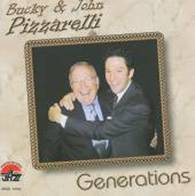 | Bucky and John Pizzarelli - Generations (Arbors ARCD 19345)
|
A reviewer’s nightmare is overlooking albums deserving of a better fate than being left to gather dust. Such a disc is this guitar duo set recorded in 2006 by the prolific recording Pizzarellis, father Bucky (then 81) and son John (47). Using the seven string guitar, they cover a wide range with rich chordal voicings as they segue easily between lead and rhythm showing their love of swing in tributes to Benny Goodman (Avalon) and Zoot Sims (Fred) but outstanding are the lovely Darn That Dream and John’s I’ll Remember April, a tribute to guitar master George Van Eps
   
|
by Kevin Jones
Previously published in Limelight January 2012 |
| Back to Index |
|  | Emma Grace Stephenson - Jazz Workshop Australia
|
This is an impressive recording by the 20-year-old pianist and vocalist who won the 2010 Pat Corrigan Scholarship at the annual JWA Jazz Camp run by John Morrison and is now studying jazz at the Sydney Conservatorium. Backed consummately by bassist Phil Stack and Morrison’s drums, she shows she can not only swing but her time is sure, she uses dynamics expertly, and has a sure and sensitive touch. Her singing, confined to one track, is overshadowed by her piano playing which sparkles in any context. Just listen to Green Dolphin Street. Here is a pianist of rich promise
   
|
by Kevin Jones
Previously published in Limelight January 2012 |
| Back to Index |
| 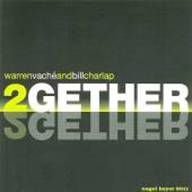 | Warren Vache and Bill Charlap - 2gether (Nagel Heyer 7003)
|
The late cornet great Ruby Braff called it “the adoration of the melody” _ the love and respect for the timeless melodies from the Great American Songbook. It’s something that Warren Vache, who has taken over Braff’s mantle, and pianist Bill Charlap share. Vache has developed a beautiful tone on both cornet and flugelhorn, one of great richness and depth. Listen to any track and you will hear a master at the peak of his powers pushed all the way by the pianist. Their musical empathy is uncanny. This is one of the most beautiful duet sets I have heard
    
|
by Kevin Jones
Previously published in Limelight January 2012 |
| Back to Index |
| 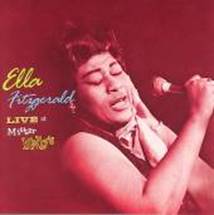 | Ella Fitzgerald - Live at Mister Kelly’s (Verve 0602517332157)
|
A real treasure trove, this set captures a relaxed Ella Fitzgerald in an intimate setting interacting confidently with a live audience at the Chicago nightclub in 1958 with her trio. It has never released before probably because Norman Granz had already released concert albums with her from the Hollywood Bowl (1956) and the wonderful Live At The Opera House (1957). This is vintage Ella, a mixture of uptempo numbers, lovely ballads and swing anthems scatted as only she knew how. Many were songs she rarely sang including two associated with Frank Sinatra ie. In the Wee Small Hours and Witchcraft. A must for Ella fans
    
|
by Kevin Jones
Previously published in Limelight January 2012 |
| Back to Index |
|  | Cedar Walton - Voices Deep Within (Highnote HCD 7204)
|
Having recorded ‘Naima’ in 1959 with Coltrane himself, there is none better qualified to re-record the classic from the album ‘Giant Steps’. This is Walton playing to his strengths; three of his own originals, ‘Over the Rainbow’, Stevie Wonder’s ‘Another Star’ and Rollins’s ‘I Got Rhythm’ clone ‘No Moe’. Yes he finds safety in those strengths but there are few more exquisite pianists out of the ‘Messengers’ tradition than Walton. He remains a cherished link to the past via Tatum, Powell, Peterson and Silver. Bassist Buster Williams is the anchor alongside the relative youth of Vincent Herring’s tenor and Willie Jones’s III drums.
   
|
by Peter Wockner
Previously published in Limelight Dec 2011 |
| Back to Index |
| 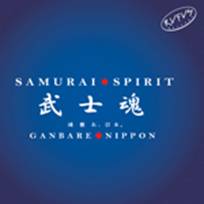 | Samurai Spirit - Ganbare Nippon (Rufus Records RF 101)
|
Samurai Spirit satisfies the soul and helps in a small way to address the catastrophe caused by the earthquake and tsunami at Tohoku north of Tokyo in March 2011, as a percentage of sales supports the disaster relief. The two CD set includes 25 tracks comprising 70 artists who’ve recorded for the Rufus catalogue. Each track provides a pleasant reminder of the Australian classics that have appeared on this label such as Clarion Fracture Zone. Animus Part 1 is a scintillating post bop signature by Tony Gorman and a showcase for a thunderous yet spatial Alister Spence, followed by Animus Part II, a CFZ definitive contrast using the Bulgarian Martenitsa Choir in Gaelic tongue. The stellar selections also include Eulogy for a Friend from saxophonists Bernie McGann and Sandy Evans. A subtle theme of ‘recovery’ is ever-present over both discs, but the compilation is simply an exemplary representation of the label’s impressive catalogue.
    
|
by Peter Wockner
Previously published in Limelight Dec 2011 |
| Back to Index |
|  | Warren Wolf - WW (Mack Avenue MACK 1059)
|
“The next major voice on his instrument.” What a challenge for a debut recording artist to fulfil! Six of the ten tunes are Wolf originals while other polished gems include Corea’s Senor Mouse and the pretty Mercer/Mandel Emily. Wolf might be a vibrant virtuoso on vibraphone and marimba but the ensemble sound is his primary concern and why not when Christian McBride, Greg Hutchinson & Peter Martin are present. The opener, 427 Mass Ave defines the set with hard-bop unison front lines over a speed bumpy rhythmic signature driven by piano and bass with Hutchinson washing the space with splashy cymbals and intense skins
   
|
by Peter Wockner
Previously published in Limelight Dec 2011 |
| Back to Index |
|  | Ella Fitzgerald - Best of the BBC Vaults (Voyage 2759806)
|
Ella Fitzgerald’s golden years were from 1955, when she left the Decca label to be managed by Norman Granz resulting in the first of the popular songbook albums (Cole Porter) on his new Verve launched as a showcase for her talents, until her final recording date for the label on March 26, 1965 with pianist Tommy Flanagan, bassist Keeter Betts and drummer Gus Johnson. She was at the peak of her powers: this wonderful voice, her impeccable pitch and diction, and ability to swing unmatched by anyone in both popular music and jazz. This is why this set, with audio highlights of more than two hours of some of the best of the singer on film, is so important, especially as the two 1965 TV specials are vintage Ella. There is an exhilarating set from Ronnie Scott’s Club in London (1974) and another from the 1977 Montreux Jazz Festival but this was the decade when her health and vocal range began to diminish, although her rhythmic sense was undiminished. Highlights abound: a joyful Cheek To Cheek, Goody Goody with Flanagan quoting a few bars of One O’Clock Jump, and a masterful Every Time We Say Goodbye. Indispensable.
    
|
by Kevin Jones
Previously published in Limelight Dec 2011 |
| Back to Index |
| 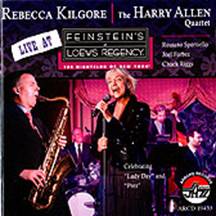 | Rebecca Kilgore with Harry Allen Quartet - Live at Feinstein’s: Celebrating Lady Day and Prez (Arbors ARCD 19433)
|
This is a first-class example of how to salute the past without imitating it, no mean feat when the music is associated with two of jazz’s greatest and legendary names: blues singer Billie Holiday and tenor giant Lester Young. This album, recorded live at Feinstein’s in New York in August last year, contains some of the best Rebecca Kilgore on disc but she always seems to be in fine voice. Her quartet is perfect for the occasion. Both tenor Harry Allen and pianist Roberto Sportiello, exhilarating and imaginative soloists, know how to back a singer perfectly. Highly recommended.
   
|
by Kevin Jones
Previously published in Limelight Dec 2011 |
| Back to Index |
| 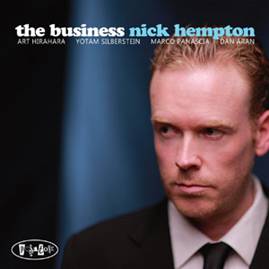 | Nick Hempton - The Business (Positone PR 8085)
|
NY based since 2004, this Australian born saxophonist’s second album cements what has become a highly cohesive and multicultural working group. Appropriately titled, he sets about driving a hard bop agenda of mostly originals with only three of the 10 pieces ballads. Hempton’s tenor DNA shows signs of Gordon and Rollins notably on the leisurely Gee Baby Ain’t I Good to You whilst his beautifully constructed and logical solo on Roland Kirk’s From Bechet, Byas & Fats is a highlight following an exciting ensemble accelerando . Drummer Dan Aran fills pauses with well placed multiple punctuations, bridging what is clearly a solid band dynamic
   
|
by Peter Wockner
Previously published in Limelight Nov 2011 |
| Back to Index |
| 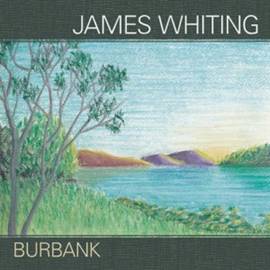 | James Whiting - Burbank (www.jameswhiting.com.au)
|
For his debut, Brisbane born vibist has tapped instinctively into the elegant sound of the vibraphone with a maturity way beyond his 20 years. His sometimes, chiming, sometimes modal or swinging compositions utilising warm melodies are beautifully subtle vehicles for his expressive style. Never overtly virtuosic, he plays with controlled finesse. A student of Joe Locke, Whiting gathered a first rate band to record in New York including ex-pat bassist Sam Anning and pianist Steve Newcombe. John Wikan’s textural drumming and notably his cymbal work particularly complements the recording as does the German saxophonist Stefan Schmid on four of the eight tracks
   
|
by Peter Wockner
Previously published in Limelight Nov 2011 |
| Back to Index |
| 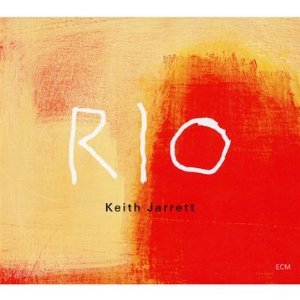 | Keith Jarrett - Rio (ECM/Fuse)
|
US pianist, composer and bandleader Keith Jarrett displayed extensive musical talents at an early age. Possessing perfect pitch he began piano lessons just before his third birthday, appeared in a TV talent show at age five, and gave his first piano recital at seven playing Mozart, Bach and Beethoven plus two of his own compositions. As a teenager Jarrett studied jazz, became inspired by a Dave Brubeck concert, and turning down an offer to study classical piano in Paris, pursued jazz studies at Berklee College of Music in Boston, Massachusetts. Moving to New York in 1964, Jarrett’s talents were soon noticed and he joined Art Blakey’s Jazz Messengers in 1965, subsequently signing on with the trail-blazing Charles Lloyd group where he formed a long-lasting friendship with drummer Jack Dejohnette. From 1970 to 1971 Jarrett played electric keyboards in a reputation enhancing stint with Miles Davis, but later turned his back on electronics. In 1971 Jarrett also began his crucial, surviving association with Manfred Eicher of ECM records recording his first solo piano album Facing You. Jarrett then performed solo concerts across Europe, releasing his Bremen and Lausanne performances in a triple album voted 1974 Record of The Year by Down Beat and three other influential US publications
Jarrett’s legendary improvisations encompass many jazz traditions including blues and gospel, but also western classical music and folk. His solo concerts in the seventies and eighties were totally improvised, as is this current live release recorded at Rio De Janiero, Brazil in April 2011. Tracks are simply labelled Rio Part I through to Rio Part XV recorded before an enthusiastic audience at the sold-out concert. The material is multifarious, from a boogie-woogie style Part XI to gospel-laced Part XIV and Part V, or classically-based Part I and Part II, all executed with breathtaking technique and a seemingly inexhaustible flow of rhythmic, harmonic, and melodic ideas. Part IV is a ballad-style piece of wandering, romantic beauty, using increasingly extended harmonies, while Part X plunges straight into hyper-fast high treble runs working into underlying post-bop ideas overlaid with classical motifs. Finally, Part XV evolves slowly and fluidly in a meditative piece with what Jarrett terms: “My best ending ever.”
    
|
by John McBeath
Previously published in The Australian Nov 2011 |
| Back to Index |
| 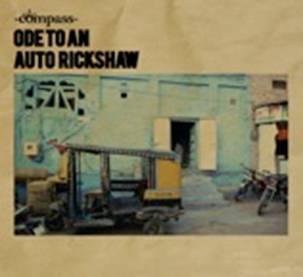 | Compass Quartet - Ode to an Auto Rickshaw (Earshift Records)
|
An increasing trend amongst Australian jazz musicians is to incorporate elements of Indian classical music into a jazz context, with varying degrees of success. The Australian Art Orchestra and Sandy Evans have been foremost in these endeavours, both releasing albums that explore the concept. Jeremy Rose is a highly active Sydney saxophonist who won the 2009 Bell Award for Best Young Jazz Artist, and appears in, and/or leads various groups including The Vampires, The Strides, and several jazz combos, releasing a number of albums. The latest features Rose’s saxophone quartet plus two Indian musicians, vocalist and sitarist Sarangan Sriranganathan with Bobby Singh on tablas. The title track, composed by Sandy Evans, is in Carnatic (South Indian) style opening with Christina Leonard’s thematic soprano sax and later Rose’s alto followed by Mathew Ottignon’s tenor in weaving improvisations over tablas, sitar, and ensemble voicings. The piece works towards Mohara (crescendo) then a concluding vocal Korvai (a pattern of rhythmic syllables) composed by Guru Karaikudi Mani. The Indian content sounds authentic, the harmonised four saxes less so, with the solo reed work seemingly more a mixture of Indian musicality and western classical references. However the intent to fuse Indian music with European concepts works better than many similar attempts to date. The remaining five tracks are each movements in Rose’s composition River Meeting Suite.
   
|
by John McBeath
Previously published in The Australian Nov 2011 |
| Back to Index |
| 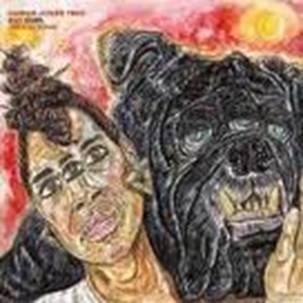 | Darius Jones Trio - Big Gurl [Smell My Dream] (AUM Fidelity/Fuse)
|
Following his anagalactic debut album, Man’ish Boy in late 2009, US alto saxophonist Darius Jones continues “the sonic poem of my life” with this new CD, and a different trio. The same exultation and intensity of emotion are still present in the 32 year old Jones’s fiery alto, but this time using a more orthodox instrumentation of bassist Adam Lane and Jason Nazary on drums. The opening to the first track, E-Gaz is emblematic: three high sax notes and a blurted low one introduce sizzling cymbal and stick work from Nazary as the bass romps through a groove pattern before Jones returns to add a repeated staccato single note crossing the rhythm, ahead of explosive soloing. The piece continues as Jones plays modal passages; quick darting runs; long, wide-vibrato notes; honks, hoarse multiphonic sounds; and shrill trills, building the climax to end on one long, whistle note. Michele Loves Willie demonstrates Jones’s ability with a ballad, maintaining a more conventional tonal quality, and showcases some lovely lines in Lane’s bass solo. A standout is Jones’s A Train, an amazing re-working of the Ellington standard, employing manic shrieks, throaty wails, and inspired blowing, as well as show-stopping eight bar exchanges between alto and drums, and a spectacular bowed bass solo. “Soul power” is Jones’s apt summation of his extraordinary interpretations and titanic, trail-blazing originality
    
|
by John McBeath
Previously published in The Australian Nov 2011 |
| Back to Index |
| 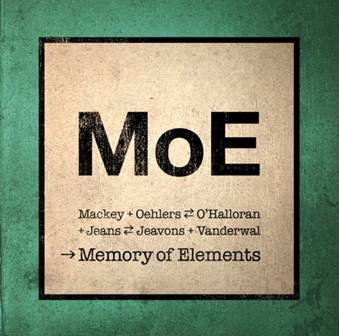 | Memory of Elements - MoE (Jazzhead/MGM)
|
Perth-based Jamie Oehlers, possibly the best jazz tenor saxophonist in Australia, has played with a great many local and overseas top-ranking names. Now Oehlers has assembled a sextet of Perth musicians, a city where jazz, partly due to Oehlers, is undergoing a resurgence. These six originals, recorded live in Perth, are by various band members, including two by Oehlers. The opener, Prehensile Dream opens softly with Simon Jeans’s guitar chords against the harmonised horns of Oehlers, with Carl Mackey on alto, when strong piano chords from Tom O’Halloran emerge as the piece gains volume and a slightly over dramatic epic substance. Bolero y Abakua based on Abakua rhythms from Cuba moves through several differing Latin beats with top ranking drummer Ben Vanderwal and Pete Jeavons on bass working overtime to supply a great foundation for a clamorous crescendo from the soloing horns, underlaid by O’Halloran’s uproarious piano. The longest track at 15 minutes, Angle opens with a cracking, high-speed drum solo ahead of a jagged theme with the two horns chasing each other, but not generating the anticipated heights of excitement; more level on the saxes would have improved this. A ballad, Lines gives Oehlers an opportunity to display his virtuosic ability, but again the tenor is slightly under-recorded. Everyone here is an excellent player but somehow something has been lost in over-written arrangements and varied mixing
   
|
by John McBeath
Previously published in The Australian Nov 2011 |
| Back to Index |
| 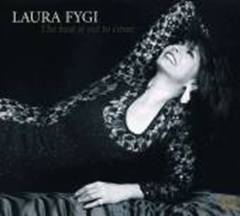 | Laura Fygi - The Best is Yet to Come (T2 Entertainment PRCD2011001)
|
This album reminds me of another era (1950’s and 1960’s) when singers backed by big bands revelled in the first-class settings provided by such legendary arrangers as Billy May, Nelson Riddle and Sy Oliver. Co-arrangers Jan Menu and Johan Plomp provide the means for Laura Fygi to show that not only can the Dutch vocalist smoulder like her inspiration, Julie London, as on Fever but swing effortlessly. Just listen to the sizzling Too Darn Hot or the pulsating You and The Night and The Music. Remarkably this is her first big band album. What a band and an album!
   
|
by Kevin Jones
Previously published in Limelight Nov 2011 |
| Back to Index |
| 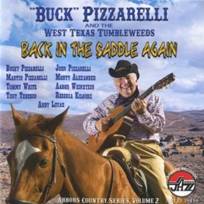 | “Buck” Pizzarelli and the West Texas Tumbleweeds - Back in the Saddle Again (Arbors ARCD 19414)
|
Who would have thought that Jamaican-born pianist Monty Alexander was a country music fan. He obviously enjoyed himself as veteran guitarist “Buck” Pizzarelli’s new sidekick with the West Texas Tumbleweeds on this engaging sequel to 2009’s Diggin’ Up Bones, playing melodian on Drifting Along With The Tumbling Tumbleweeds and crooning Happy Trails (even yodelling briefly) in a solo performance. His playing highlights the jam on the effervescent opener Lone Star Swing where vocalist Rebecca Kilgore also shines. Three Johnny Cash numbers are covered but nothing matches the languid Along the Santa Fe Trail. Can we hope for a third album?
   
|
by Kevin Jones
Previously published in Limelight Nov 2011 |
| Back to Index |
| |
Dave Ades & Friends at Venue 505 9th Nov 2011
I haven't seen Dave Ades in a while, but saw he was playing with friends at the 505 and knew I had to go........
Arrived a little early and the band was rehearsing, Cameron (Undy) said I could hang loose, so ordered a beer and listened to a preview of what was to unfold..... like a wine tasting, a gorgeous red that there is no way you are going to despatch to the bucket!
All Ades originals with a band of chosen 'sidemen'. The first number set up the night with Ades and Keegan (tenor) playing in unison, then branching out into solos. Ades looks like an American Indian, fine features, tanned taught body belying his years, soloing with the power of a man half his age! One was reminded of McGann when his knee used to come up and meet the bell! Ades, like McGann is no copyist, he has his own sound and like McGann is a fine composer. I should have taken notes and would then been able to have given you a blow-by-blow description, alas I did not. However, the highlights are still with me! "one for the salvos" let loose the band, Ades is not a dictator, he solos stunningly, but then encourages his compatriots to bring his ideas to life through their own voices. Here we had solos by Ades, extraordinary, and Keegan coming from a totally different place, but not out of place, They retired to the side and let Carl Dewhurst (guitar) do his thing as only Carl can do! Evan Mannell on drums put down some great rhythms at times putting down a rock beat, but it was his mallets that just blew me away, which were so right for the Ades composition. He also had a cymbal on the floor which he used to great effect. As always, that little imp of the bass, Cameron Undy played like a titan! Man, this was only the first set!
The second set started off with an extended number, of which the highlight, there were so many, was Ades and Dewhurst exchanging ideas with a call and response edging each other to greater heights! The next number inspired by Ades girlfriend, something 'Bean", whose title drew a few laughs until Ades announced, "B-E-E-N". Followed by "Hidden", which we were told may have had something to do with previous number? The last number was announced as something they had never played and there was some confusion as to who had the charts, Ades saying, "Can I have one?"
This was a superb night of music making by fine musicians, all individuals in their own right, brought together to discover and play the music of a great musicalitarian. Yes, there were a few flat spots, but one can only imagine what these guys would do with a week's residency. Sadly those days have gone, what a pity. Ades is a great alto player and that would be enough; he has his own voice, but then add on the compositions and you really have something special
On one night, with very little rehearsal time, we were taken on a journey to rare and unimaginable places. I'm still flying and don't know when I'm coming down? (Hopefully find a runway big enough!)
|
| by Chris Hinkley |
| Back to Index |
| |
Wangaratta Festival of Jazz 2011
The 22nd edition of the Wangaratta Festival of Jazz began with a literary flavour. Sydney pianist Mike Nock, the chief festival awards judge and one of the headline performers, was there to launch a collection of jazz by Canberra poet Geoff Page on Friday evening. In a wonderful echo of 1950s beat poets, Page, accompanied by Sydney bassist Alex Boneham, read several poems; language riffing about jazz and its performers.
Friday’s opening concert featured bassist Linda Oh, ex Perth, now New York based, with three US players – saxophonist Sam Sadigursky, drummer Kendrick Scott, and new piano prodigy, Cuban born Fabian Almazan. The tight combo performed compositions by Oh and Almazan and also included a dramatic rendering of Something’s Coming from West Side Story. Oh delivered expressive solos with impressive technique, while Almazan played with exquisite delicacy of touch and ceaseless ideas reflecting classical influences. It was refreshing to see their drummer supplying power and speed with minimum muscularity and maximum subtlety. Almazan, now 27 began studying classical piano at age seven in Cuba, and cites Chopin as a favourite. An experienced piano trio, Oh’s smaller group later demonstrated an almost clairvoyant cohesion, anticipating each other’s phrases, presenting many of Almazan’s compositions from his new album, Personalities.
Top Australian guitarist James Muller with his trio of drummer Ben Vanderwal and Alex Boneham on acoustic bass worked through a diverse program including a couple of standards. Muller’s extraordinary guitar work was especially evident in a Jimi Hendrix piece, Mitch. With his flashing high-speed runs and astonishing technique it’s easy to see why US guitarist John Scofield named Muller, “the most exciting guitarist I’ve heard in years.”
Friday night ended with the high spot of the festival: US trombonist and composer Josh Roseman with the Australian Arts Orchestra, a total of thirteen performers, playing Roseman’s originals. Roseman, a highly original musician eccentrically announced his drummer and multi-instrumentalist as “Peter Apfelbaum on the membrane-ophone,” then counted in the ensemble in falsettoed gibberish. They played Roseman originals with arcane titles in extravagantly complex arrangements that demonstrated an innovatory path for future contemporary jazz. Although cleverly structured, there was ample space for a series of stellar soloists including Tim Wilson’s brilliant alto sax, the outstanding Jamie Oehlers on tenor, trombonist James Greening, piano maestro Paul Grabowsky and drummer Apfelbaum soloing on tenor sax and melodica. Elsewhere in the festival Roseman presented his quartet, showcasing his high-level trombone work with a beautiful mellow tone while a squad of electronics added textural variety. Several guests were brought on including American bass guitarist Chris Hale who played a lustrous solo.
On Saturday French bass-clarinettist Denis Collin presented three members of La Societe Des Antipodes from Paris together with top-ranking Melbourne saxophonist Adam Simmons. Their divergent material began with a softly eloquent piece in three four time which built to a delirious climax, followed by a deep, murky intro from keyboardist Benjamin Moussay developing into a hyper fast post-bop number where Simmons rocketed off on tenor sax and Collin displayed a nicely contrasting intellectual, European approach.
Two grand old masters, both in their seventies, pianist Mike Nock and acoustic bassist Barre Phillips, France-based, were paired for an hour of unstructured music circling from soothing serenity to restless edginess. Phillips produced a surprising range of sounds, often using the bow on the bass’s body; sometimes the bass sighed and moaned as the piano tinkled rhythmically in the high treble or stabbed and rolled in the low end. Another Saturday duo featured pianist Paul Grabowsky and Sandy Evans, on soprano or tenor sax. Their music was thematically structured, often fluidly romantic, and both soloed copiously. Evans also appeared on Sunday with her high quality sextet to present the powerful thirteen-suite work from their recent album When The Sky Cries Rainbows. The work is dedicated to Evans’s husband, a victim of Multiple Sclerosis, and conveys a depth of emotions from apprehension to despair and ultimately hope. There was beautifully sad balladry from Evans on soprano or tenor sax and many outstanding solos, notably from Evans and Phil Slater’s trumpet.
This year saw the administration of an interim Jazz Festival board following the previous committee’s resignation after festival losses totalling $124,000, were underwritten by the City Council. Fortunately, long-term artistic director Adrian Jackson was retained, since despite cost over-runs Jackson’s impeccable taste was chiefly responsible for the festival’s artistic successes. Attendance numbers were unavailable but revenue in excess of $320,000 had been racked up. Although Jackson operated with a reduced budget, he again assembled a diverse program of jazz styles. There were 220 performers, including fourteen from abroad, perhaps fewer overseas headliners than some years, but throwing the spotlight on to the strong contingent of Australian talent.
The national jazz award for $8000 and an ABC recording contract went to Sydney drummer Tim Firth.
|
| by John McBeath |
| Back to Index |
| 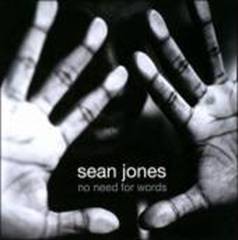 | Sean Jones - No Need for Words (Mack Avenue MAC 1057)
|
It came as no surprise to me that trumpeter Sean Jones toured recently with ex Miles Davis band members Marcus Miller, Herbie Hancock and Wayne Shorter keeping a legacy alive but clearly with this release, Jones is his own man. He was the lead trumpeter with the Lincoln Centre Jazz Orchestra for five years and this is his sixth album as leader. Conceptually one about love and inspired by various love induced emotional states. ‘Loves Fury’ the highlight, is case in point where Jones and alto saxophonist Brian Hogans trade alternative argumentative blows over the top of a furious African tom tom beat by drummer Obed Calvaire and angry cries from Matt Stevens guitar. His roots are heavily informed by church gospel music and two of these eight tracks more than intrude into that territory using almost Chris Bottiesque legato strains. These are especially melancholic personal statements to his parents but tend to border on the morose. Otherwise the album is a treat, highlighting not only his bold approach, his bright tone but also his teasing interaction with his musical co-horts especially on the opener Look and See where pianist Orrin Evans’s block chords beautifully dance in a light-footed synchronicity adjacent to the trumpeter’s assurance
   
|
by Peter Wockner
Previously published in Limelight October 2011 |
| Back to Index |
| 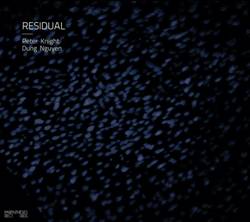 | Peter Knight and Dung Nguyen - Residual (Parentheses Records PREC 02)
|
The trumpeter never fails to push the limits of his creativity, not unlike Miles. This duo album with Way Out West collaborator Dung Nguyen almost re-defines the sonic possibilities of a trumpet or cornet. Other instruments include prepared piano, electronics and traditional Vietnamese stringed instruments dan tranh or dan bau and modified electric guitar. To western ears the exoticism is captured or processed in such a way as to enhance the percussive as well as the tonal mystique and this feeds immensely hypnotic grooves. Meanwhile Knight’s thematic approach; the mountainous cries for help or his bias favouring air is as omnipresent as Buddhist enlightenment.
    
|
by Peter Wockner
Previously published in Limelight October 2011 |
| Back to Index |
|  | Takadimi - New Common Sense (The Planet Company/MGM)
|
This debut album from Sydney quintet Takadimi follows their formation in 2007. The style is diverse, but strongly infused with folk/world music and jazz references, adding a pinch of soft country rock. There are two guitars, electric or acoustic bass, violin, and compatible percussion from Jeffrey Argent including a drumkit and the Peruvian box drum, the cajon. All ten tracks are collaborative compositions with ample space for solos. Opening track, Into The Night is described as playing “with the tala rhythms of Indian classical music . . . from which they take their name.” Tala is a Hindi word meaning rhythmic cycle; Takadimi is an Indian system using vocal syllables to describe beats and their subdivisions. The opener has two guitars working on an Indian-style rhythm as Brianne Curran’s violin takes the lead to improvise in a convincing, authentic fashion, building tension before a galvanizing guitar solo and a fade-out theme. The title track is a slower melody, featuring an intelligent bass solo from Curtis Argent against a folksy/jazz, busy riff from guitarists Keiran Ryan-Colton and James McKendry. Little Cashews opens with big, rhythmic, octave chords on nylon-stringed guitar – both nylon and steel strings are used effectively – introducing a smartly moving theme by guitar and violin in unison which has aspects of an Irish bluegrass melody intermingled with an eastern tonality
   
|
by John McBeath
Previously published in The Australian Oct 2011 |
| Back to Index |
|  | Ingrid James & The Global Collective - Pangaea (Newmarket Music)
|
This, the sixth release from Brisbane vocalist Ingrid James, contains a diverse line-up of eighteen multinational musicians presenting covers of numbers from the 1970’s and 80’s. The title comes from a name given to the supercontinent of 250 million years ago, before the separate continents drifted apart. The eleven tracks were recorded in Brisbane and several US locations with arrangements by Texas musicians trumpeter Paul Armstrong, and multi-instrumentalist Todd Harrison who both appear on most tracks. Opening with Fame, the 1975 David Bowie hit – not the musical – is an overblown arrangement of multiple percussion, trumpet and alto solos, ghostly echoes from a back-up vocal group and James’s voice appearing in the mix. A Fame remix, albeit a more robotic-sounding one is included as the final track. A C&W song from 1944, San Antonio Rose begins with Mexican-style wordless chanting against rustling castanets, tablas, guitar and synthesiser before Armstrong’s insipid vocal and Christian Fernandez’s distant muffled words. Bert Bacharach’s Close To You starts with rollicking guitar and percussion quadrupling the time behind James’s contrasting high-pitched voice in slowed time, moving into wordlessness and back-up group chanting. Perhaps the most successful piece is a straight ahead ballad arrangement of Neil Finn’s Don’t Dream It’s Over, giving James a chance to express and interpret the song with a more appropriate quintet’s soft acoustic backing
  
|
by John McBeath
Previously published in The Australian Oct 2011 |
| Back to Index |
|  | Origami Trio - The Blues of Joy (Listen/Hear Collective)
|
This album must qualify as having the most attractive, cleverly designed cover in CD history. Reflecting the Melbourne group’s name, the circular, quality paper packaging in Origami style, looks like a round, white, hand-held fan. What’s more, bandleader and woodwind multi-instrumentalist Adam Simmons, a designing artist, has himself produced and folded these album packages. The trio consists of Simmons on alto sax, bassist Howard Cairns, and drummer Anthony Baker. Simmons wrote six of these widely differing nine tunes, and the surprise opener, Sometimes I Dream comes from C&W singer Merle Haggard. It starts with Cairns’s ultra-slow acoustic bass before Simmons’s alto emerges as if from mantles of mist continuing the almost funereal tempo suffused with deep feeling. The Blues of Joy is at the other end of the mood spectrum, opening in a joyful, uptempo bouncy theme stoked with enthusiasm and using the alto’s high end to delirious effect. Another speedy original, Morse Code almost speaks its staccato narration of the telegraphic title, with Simmons soaring into harmonics and a frenetic 16th note groove, assisted greatly by Baker’s accelerated stick work, sometimes melodically integrated with the horn. Simmons’s total alto mastery is evident on Cheers Big Ears with street march drumming behind the exquisitely tender saxophone, seguing into quick soul-edged runs. These highly descriptive pieces are expertly interpreted by an energetic and intelligent trio
   
|
by John McBeath
Previously published in The Australian Oct 2011 |
In a way, this album reminds me of Sonny Rollins’s Way out West when the emerging titan, back in 1957 used only saxophone, bass and drums to transform some of the most unlikely simple themes into sophisticated jazz. Simmons, a genuine multi-instrumentalist, chooses only alto saxophone and achieves similar feats with Merle Haggard’s lost-love lament ‘Sometimes I Dream’. Snow Patrol’s pop ballad ‘Chasing Cars’ receives a haunting bowed double bass intro by Howard Cairns while the highlight Outkast’s 2003 hit Hey Ya is shuffled along briskly by Anthony Baker’s ride cymbal. Simmons is no stranger having been on the Melbourne scene since the 1990’s but this could be his defining moment. Origami, with masterly technique, embrace some of the most vital aspects of jazz tradition and yet has an utterly contemporary relevance. Swing, groove, interplay, self expression, and in the example of past masters such as Rollins, has embraced pop without compromising artistic integrity. Meanwhile, Simmons’s original compositions are just as diverse in character with tender moments pre-empting fury then jungle growling where it almost seems he’s wrestling with the horn, or bending notes to breaking point then stretching them seamlessly in upward trajectories. The more chaotic and excessive, the more I enjoyed it.
    
|
by Peter Wockner
Previously published in Limelight January 2012 |
| Back to Index |
| 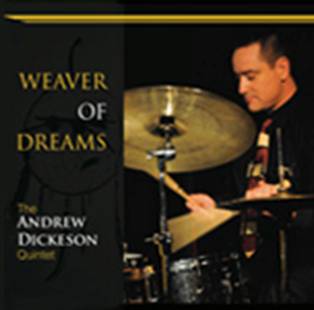 | The Andrew Dickeson Quintet - Weaver of Dreams (Rufus/Universal)
|
Sydney drummer, educator and bandleader Andrew Dickeson studied in New York in the early nineties, appears on around fifty albums, and has played with the cream of jazz talent in Australian and internationally. Recorded live at Sydney’s SIMA Sound Lounge in April 2011, this strongly swinging front line consists of tenor powerhouse Roger Manins, who commutes between Auckland and Sydney, and Melbourne trumpeter Eamon McNelis, who won the 2010 Wangaratta Jazz Festival National Award. The eight tracks are all standards, but of a slightly unusual nature, skilfully arranged by Dickeson. Harold Arlen’s Ill Wind is a fourteen minute opener, where drums rhythmically emphasize the melody line with the horns, ahead of two solo sets from all five, firstly with Manins’s full-bodied, endlessly inventive tenor, superbly underwritten by pianist Steve Barry and Alex Boneham’s bass. Isfahan features solo trumpet with the rhythm section and McNelis delivers a sensitive ballad interpretation, climbing chromatically into the upper register then dropping down to tenderly caress the lower notes before a languid piano excursion. The title track opens with highly intelligent, crash-and-bang free drums followed by outstanding solos from everyone. Manins plays a wonderful breathy tribute to Coleman Hawkins on Darn That Dream and bass and drums provide clever exchanges in Parker’s Big Foot. For a live recording this album quality is very good with no distracting audience noises
   
|
by John McBeath
Previously published in The Australian Oct 2011 |
Few groups making their recording debut have excited me as much as this quintet led by Andrew Dickeson, whose drumming is a byword for taste, class and swing. Standards and little played compositions by Charlie Parker and Dexter Gordon are reworked with imagination, fire and excitement. Ill Wind is given an Art Blakey Jazz Messengers makeover (a far cry from my favourite version by Ella Fitzgerald at the Chicago Opera House in 1957) and Soy Calif, after flirting with the feel of a Cuban descargo, takes off crackling with unflagging excitement. Melbourne trumpeter Eamon McNelis is superb, especially on Isfahan, his beautifully controlled horn sensitive with a singing quality. Tenorist Roger Manins’ solos are full of ideas and pianist Steve Barry is another fluent and absorbing soloist. Bassist Alex Boneham meshes beautifully with Dickerson who gives a master class of jazz drumming on Relaxin At Camarillo. An exceptional album!
    
|
by Kevin Jones
Previously published in Limelight Nov 2011 |
| Back to Index |
| 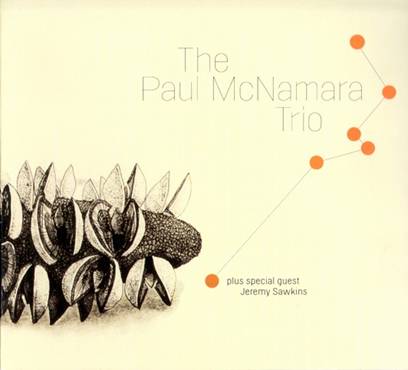 | The Paul McNamara Trio - Independent
|
The first thing to say about this album is that it’s a non-standard approach to standards. The Sydney trio is off standard too, comprised of pianist Paul McNamara, David Pudney on acoustic bass, and vocalist Nicky Crayson: all widely experienced performers. Guitarist Jeremy Sawkins guests on seven of the twelve tracks. The opening track I Didn’t know What Time It Was, arranged by Crayson, sets the style with her novel interpretation extending long notes way beyond their usual length and singing a catch-up over the next few bars. She also improvises a melody line in the Rogers and Hart song using the original words dramatically as McNamara’s piano supplies softly jabbing chords and flowing embroidery. Sawkins makes an appearance on a Wayne Shorter medley commencing with When You Dream, to play a Jimi Hendrix inspired sequence after Crayson’s vocalised theme, followed by a subdued piano of gloomily expressive chords. Drought, a Sawkins composition for solo guitar, right from its wide reverb single note spacey opening, paints an effective musical picture of parched timelessness. McNamara’s piece, The Night Sky is also descriptive, interspersing deep, dark chords with pedal notes to produce a ‘black as midnight’ effect. Pudney’s walking bass skilfully underpins Crayson’s beginning to Willow Weep For Me and as the song progresses with perhaps a little overly dramatic vocal emphasis, the bass supplies a strongly swinging solo
   
|
by John McBeath
Previously published in The Australian Oct 2011 |
| Back to Index |
|  | Karrin Allyson - Round Midnight (Concord Jazz CJA-32662-02)
|
Quiet and haunting, this is the finest ballad album I have heard since Frank Sinatra’s classic 1958 Capitol set Only The Lonely. High praise indeed but the smokey-voiced Karrin Allyson is in her element here. A consummate jazz singer, she adds her own reflective touch with emotional intimacy to such gems as Turn Out The Stars and I’m Always Chasing Rainbows. Allyson, who also plays piano throughout and wrote the charts, is backed beautifully by her group especially Bob Shepherd (reeds), whose flute steals the show on The Shadow Of Your Smile, and Randy Weinstein (harmonica) on Sophisticated Lady
    
|
by Kevin Jones
Previously published in Limelight October 2011 |
| Back to Index |
| 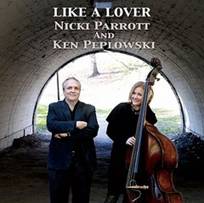 | Nicki Parrott and Ken Peplowski - Like a Lover (Venus VHCD 1050)
|
After two duet albums with pianist Rossano Sportiello, Nicki Parrott has teamed up with clarinet virtuoso Ken Peplowski for her third. A singer of true class, her warm voice and ability to give true meaning to the lyrics, make her a joy to listen to as she accompanies herself. She’s also an exceptional bassist. Through 14 ballads she is impeccably accompanied by Peplowski who also shows what a fine tenor player he is. Her jazz-inflected, melodic offerings breathe new life into golden chestnuts from Irving Berlin (What’ll I Do) to Lennon and McCartney (Here, There and Everywhere).
    
|
by Kevin Jones
Previously published in Limelight October 2011 |
| Back to Index |
| 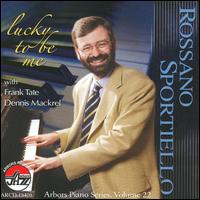 | Rossano Sportiello Trio - Lucky to be Me (Arbors ARCD 19408)
|
Rossano Sportiello impresses more with each new release. Fats Waller, Hank Jones and Barry Harris are among the Italian-born New York-based pianist’s influences and he draws on their legacy to create his own individual style in his first trio album with bassist Frank Tate and drummer Dennis Mackerel, both strong soloists. Among the highlights in an impressive mix of jazz and popular standards and originals are the bluesy whimsy of When I Grow Too Old to Dream, in complete contrast to his upbeat exploration of Bill Evans’ Show-Type Tune but best of all, Bluesy Basie, as he recalls the Count. A rare talent indeed!
   
|
by Kevin Jones
Previously published in Limelight October 2011 |
| Back to Index |
| 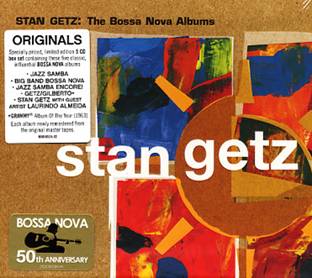 | Stan Getz - The Clef and Norgran Studio Albums (Verve B0014657-02)
|
A cover story in the May 20, 1965 edition of Down Beat magazine was headlined “Stan Getz: Always A Melodist”! And it was the tenor saxophonist’s lyricism that made him such a success both artistically and commercially; his was one of the most beautiful and recognisable tenor sounds in jazz. Inspired by Lester Young, it was light and clean, emphasising Getz’s love for melody but he also had a profound sense of swing _ and his best format was with a quintet or quartet. This three-CD release covering seven sessions from 1952-55 for Norman Granz’s Clef and Norgran labels finds him in the stellar company of first, guitarist Jimmy Raney, and then valve trombonist Bob Brookmeyer. Both groups were working bands. Granz had a simple formula in recording Getz and the other great musicians in his stable _ classic standards from The Great American Songbook. Except for Ben Webster, Getz had no peer in this format. Beautifully recorded, here are flawless improvisations by one of the true greats.
    
|
by Kevin Jones
Previously published in Limelight Sept 2011 |
| Back to Index |
| 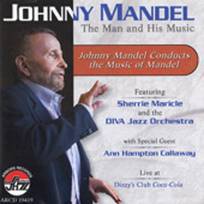 | Sherrie Maricle and The DIVA Jazz Orchestra - Johnny Mandel: The Man & His Music (Arbors ARCD 19419)
|
Recorded over two nights in 2010 (May 25-26) at Dizzy’s Club Coco-Cola at New York’s Jazz At The Lincoln Centre, this is an outstanding tribute to Johnny Mandel, a great arranger, songwriter and composer of memorable movie soundtracks .highlighted by first-class musicianship from the strong solo-laden “No Man’s Band”, Mandel conducts the orchestra through an entertaining retrospective of his career. The ensembles are flawless and the outstanding soloists include Lisa Parrott (baritone) on Black Nightgown and Janelle Reichman on Close Enough For Love (clarinet) and Low Life (tenor). TNT is a fitting closer with 11 soloists featured. Highly recommended
    
|
by Kevin Jones
Previously published in Limelight Sept 2011 |
| Back to Index |
|  | Leonie Cohen Trio - Sideshow Pony (Jazzgroove Records JGR 059)
|
This is the South African born pianist’s second album for Jazzgroove and contains two jazz standards amongst a collection of slow to medium tempo originals save the bebop anthem Billies Bounce. Her elegant understated touch makes for pleasurable relaxed appreciation shining through her tempered but highly melodic compositions. A natural it would seem at creating captivating melodies, Cohen’s ‘Twenty One’ opens with Hugh Fraser creating tantalising tension with his dry woody double bass tone before Cohen enters with a wonderful question and answer shaped melody then saliently skirts the original melody with her solo. Simon Barker’s velvety textured brushes add a level of sophistication matched only by Cohen’s choice of Ellington’s In a Sentimental Mood which she vividly portrays. ‘Wild Thing’ has an uncanny resemblance of Cole Porter’s Love for Sale while the soulful ‘The Sound of Water’, at walking pace tempo, was written for American author James McBride, is a bittersweet lament.
   
|
by Peter Wockner
Previously published in Limelight Sept 2011 |
| Back to Index |
|  | Cedric Hanriot - French Stories (Plus Loin Music PL4535)
|
You must be doing something right to attract the likes of bassist John Patitucci and drummer Terri Lyne-Carrington to your debut recording. Clearly in command of an advanced technique, French pianist and sound designer Cedric Hanriot is attracted to the elements of surprise and spontaneity but both of which are more prominent in his arrangements and cross genre splicing than the actual improvisations or interplay. Piecing together violin and cello string sections with hip-hop beats and RnB backing vocals and placing it squarely in the standard jazz piano trio foundation might just have worked. Is this France’s next Herbie Hancock?
  
|
by Peter Wockner
Previously published in Limelight Sept 2011 |
| Back to Index |
| 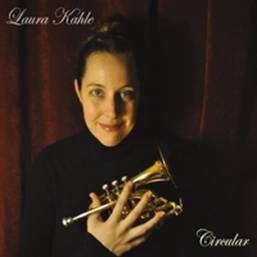 | Laura Kahle - Circular (Independent)
|
Trumpeter Laura Kahle’s debut album cover looks interesting: she is smiling enigmatically and holding what looks like a toy trumpet; it’s a pocket trumpet, about 10 inches long, around half the length of a standard trumpet. The pocket trumpet, with the same length of tubing only more tightly wound, sounds very similar to a standard trumpet, although there are slight differences in tonal quality. Kahle has an interesting background. She was born in Michigan, USA, grew up and studied for a Music Masters in Brisbane, and is now New York based where she met her husband, renowned drummer Jeff ‘Tain’ Watts who supplies excellent rhythmic work on this album. The eleven tracks are Kahle’s originals featuring her quintet plus guest Claudia Acuna singing a sweetly expressive ballad, Blackberry Garden. Sounding reminiscent of the voicings on Miles Davis’s Kind of Blue, Kahle’s composition Daize has the support of Yosvany Terry on alto sax, J D Allen on tenor, bassist Orlando Fleming, and husband Watts, who opens the track with very smart solo brushes. Touch & Go has all the elements of a quick-tempo bop standard with Watts driving everyone along, sometimes doubling the tempo as alto, trumpet and tenor take racing solos. In fact Watts is the standout on this recording, opening several tracks solo, notably Duality, and almost overshadowing everyone with his genius and endlessly creative drumkit
   
|
by John McBeath
Previously published in The Australian Sept 2011 |
| Back to Index |
|  | Lee McAllistair - Spellbound (Independent/leemcallistair.com)
|
Given her background, experience, and abundance of exceptional vocal and compositional talents, Lee McAllistair deserves to be far better known in Australia. Originally from Adelaide, now Sydney-based, McAllistair was a member of the SA vocal quartet Women With Standards, and studied for a B. Music at Adelaide’s Elder Conservatorium, with Jo Lawry, now co-vocalist with Sting, and Anita Wardell who has built a successful singing career in London and Europe. For two years McAllistair took up a teaching post in jazz vocal studies at the Conservatorium, and over the past fifteen years she has performed in London, Edinburgh, at festivals across Asia and recorded for the BBC, London and the ABC in Australia. Her vocal style is a little reminiscent of Peggy Lee, using similar expressive phrasing, but with a mistier more fragile quality over a wider range, and she writes strikingly beautiful songs that work very well on both musical and poetic levels. While there is no shortage of able female jazz vocalists in Australia, there are very, very few able to write as convincingly and memorably as McAllistair’s compositions. The opening stanza of Borneo, a highly evocative ballad in 5/4 time, immediately envelops the listener in an exotic, gauzy image of tropical dreaming: Time stands still in Borneo/Senses fill in Borneo/Can I steal away eternity? This all-Adelaide production features pianist Mark Simeon Ferguson – who also arranged many of the originals – and guitarist Mike Bevan, with bassist Lyndon Gray. The title track, Spellbound a tempo-less ballad opens with gentle, unearthly piano chords as the lyric describes a meeting between former lovers and the melody climbs and falls cyclically until the finale of five ascending vocal notes ends impressively in sopranino territory. A straight ahead, medium-tempo swinger, The Odd Couple is neatly groove-driven by bass and guitar beneath McAllistair’s occasionally melismatic vocals, and the piano and guitar solos are directly from the zenith of the swing era. In a perfect delivery of honeyed scat, McAllistair begins No Cinderella, underpinned by Gray’s ‘Big Ben’ bass which later takes a superbly stoked speedy solo; the lyrics are cleverly nonsensical: Well there was no Cinderella with size twelve shoes/Yes it’s a Grimm kind of fairytale of postmodern blues
    
|
by John McBeath
Previously published in The Australian Sept 2011 |
| Back to Index |
| 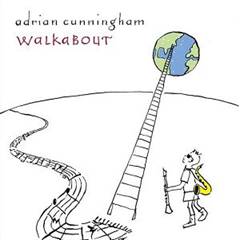 | Adrian Cunningham - Walkabout (Newmarket Music NEW3298.2)
|
Sydney saxophonist Adrian Cunningham, New York-based since 2008, returned to Sydney to record this album with his long-term Sydney group plus a string quartet led by Phil Hartl. Well known as former saxophonist with Galapagos Duck, Cunningham has won numerous awards and appeared in many global venues. Pianist Bill Risby is a strong member of Cunningham’s quartet, and remains part of ‘The Duck,’ whose work, like Cunningham’s occupies a central spot in the mainstream, with heavy dosages of funk and blues. Cunningham is extremely versatile, playing alto and tenor saxes, clarinet, and flute with a high level of technique, matched by Risby’s piano plus bassist Dave Pudney and drummer Gordon Rytmeister. The string quartet is used sparingly and most successfully with flute or clarinet, apart from a one minute Prologue for strings. Oasis (for Central Park) begins with a raucous string exposition building to the clarinet’s entry with speeding acoustic bass, and then slows to a more tranquil piano solo against a marching-style drumbeat. Two tracks are entitled In Transit, each beginning with a ‘flight delayed’ announcement and a twisted, squawky tenor theme perfectly expresses the frustration and annoyance of such occasions. Cunningham plays soulful alto on Dancing Into The Sun (For Bahia) with bluesy echoes of Joe Zawinul’s Mercy, Mercy, Mercy, where Risby excels with fast-flowing piano and Rytmeister’s drum solo erupts into a detonation
   
|
by John McBeath
Previously published in The Australian Sept 2011 |
Recorded during his most recent tour from his NY base, this album showcases mainly original compositions inspired by travels since leaving Australia nearly four years ago and adds a string quartet to his regular band. Cunningham has developed into a deeply intuitive artist who can execute a diverse array of concepts it would seem with ease. Take his shivery baroque flute intro to Winter’s end that almost has your teeth chattering, or the melancholy lamenting clarinet on What I Can’t take with Me that somehow embraces both promise and regret beautifully bridged by a tastefully coloured piano solo by Bill Risby.
   
|
by Peter Wockner
Previously published in Limelight Nov 2011 |
Sydney saxophonist and composer Adrian Cunningham takes us on a fantastic round-trip of styles and textures on his new CD, Walkabout. With his superlative quartet on board, he has also packed a string quartet and a hilarious (‘snotty’ says the liner notes) airport announcer. It's a fun ride.
The quartet – Bill Risby, Dave Pudney and Gordon Rytmeister behind Cunningham – fly through whatever is before them, whether it be the humid swing of ‘Baby Please Don't Go (For New Orleans)’, the stately ballad ‘What Can I Take With Me?’ or the cooking rock-samba of ‘Dancing Into the Sun’.
Cunningham’s virtuosic gifts on all saxes, clarinet and flute never overshadow his expressiveness or clog his clear voice. There are few more exciting soloists in jazz than those who have much to truly say and almost infinite facility to say it: the fleet, fragmented alto lines of ‘Transit #2’ (prefaced by the wonderful ‘snotty’ airport announcer, Emily Asher), the cool woody clarinet dexterity of ‘Chasing the Horizon’, especially the burred and spat Roland Kirk-like flute passages at the beginning of ‘Winter’ – reminiscent of the scraped and slippery violin effects which herald Vivaldi’s ‘Winter’ from ‘The Four Seasons’.
Cunningham’s use of the string quartet of Phillip Harti, Ursula and Angela Nelius and Paul Stender is dazzling throughout. The writing is smart, witty and used to great effect – the snarled and barbed string clusters that bookend ‘Oasis (For Central Park)’ (with a languid peaceful middle section – get it?) are startling, painting a vicious and edgy New York City. The gorgeous writing in ‘Prologue-Wanderlust’ really seems to lay the map, and the world out before you. My only reservation is with the stabbed string section as we get into ‘Oasis’ – it seems the strings are pushed a little, forced into an area better left to the muscle of horns. It’s a small quibble in a smart and evocative piece of music.
Yes, the entire ensemble shines all over Walkabout but I must give pianist Bill Risby my gold star. Whether languidly painting washed tones over the ballad ‘What Can I take With Me’ or effortlessly doubling Cunningham’s fleet flute lines in the 7/8 samba of ‘Winter’s End’ (a lovely bright sprite of a tune after the glassy ‘Winter’) Risby is style and ease personified.
It’s a trip worth taking, and while it might not take us into outer space or metaphysical realms, Walkabout is the ticket to Adrian Cunningham’s passionate, colourful, very very beautiful world.
   
|
by John Hardaker
|
| Back to Index |
| 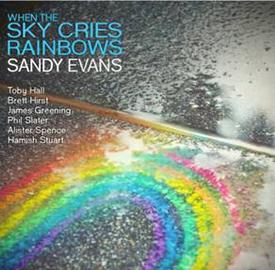 | Sandy Evans Sextet - When the Sky Cries Rainbows (Independent/Birdland Records)
|
Sydney saxophonist/composer and multi award-winner Sandy Evans, says for her the rainbow is a symbol of finding hope through suffering. And, sadly she has had far more than any fair share of suffering since her husband, clarinettist Tony Gorman was diagnosed with Multiple Sclerosis in 1996. She recalls: “Tony’s diagnosis was devastating . . . years went by in a haze of fear and depression.” Now Evans has composed a suite of works dedicated to Gorman, and expanded her long term trio with bassist Brett Hirst and drummer Toby Hall to sextet size, recording this thirteen part suite. The title track opens with a sunburst of soprano sax, James Greening’s trombone and Phil Slaters’s trumpet giving way to an introspective passage from solo soprano ornamented by Alister Spence’s glistening piano, before contrapuntal sequences from the three horns are enlivened by subtle grooves from bass and drums. Expressively swinging solos from soprano, piano and trumpet bring ‘Rainbows’ back to its descriptive, floating theme. Evans’s rich, warm-toned tenor sax begins an out-of-tempo Indigo Hues with just the piano’s soft chords and flowing accompaniment, while Spectre is a two-minute trumpet solo of aching beauty. Indra Slays The Demon Serpent is an energetic workout for Greening’s declamatory trombone. These outstanding works, exquisitely played, embody both sadness and hope in a landmark album, adding to Evans’s remarkable repertoire
    
|
by John McBeath
Previously published in The Australian Aug 2011 |
| Back to Index |
|  | Mace Francis Orchestra - Chinese Whispers IV (Listen Hear)
|
Eleven different composers wrote the title track for this thirteen-piece Perth group. The idea was to have composers create ten bars each, passing these on to the next participant who then passes on only the newly composed section to the next composer so that each sees only the previous composer’s work. There are rules regarding notes to use and tempo, and the final work – the fourth edition – had every composer contributing twice. Each participant was also asked to write a new, unrestricted piece inspired by the collaboration, and seven of these are included. The resulting opener, Chinese Whispers IV is surprisingly coherent, but then each of the contributors is a talented composer, including leader-conductor Mace Francis, and the award winning Johannes Luebbers. The title track has a contemporary big band sound, bold and brassy at times, subdued and section-focused at others, but always with interesting scorings and ideas. The leader’s composition Little White Lie begins with a passage of subdued expectancy using trombones moving to climactic trumpets to introduce Sean Little’s lengthy solo narrative from restraint to crescendo on tenor sax. Rumour Has It by Johannes Luebbers features a dramatic score with an outstanding trumpet lead and solo from Callum G’Froerer. These numbers are much more than mere big band swing, displaying the MFO’s ability to punch musically well above its weight
   
|
by John McBeath
Previously published in The Australian Aug 2011 |
| Back to Index |
| 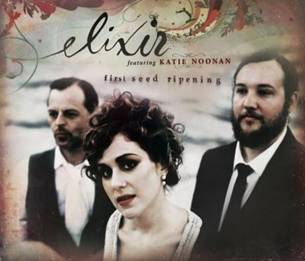 | Katie Noonan Elixir - First Seed Ripening (ABC/Universal)
|
Brisbane vocalist Katie Noonan’s trio Elixir has always been about poetry set to music. With husband Zac Hurren on soprano saxophone and top-ranking Melbourne guitarist Stephen Magnusson, Noonan’s classical-style soprano graces this album, Elixir’s second, following their self-titled debut in 2003. That first recording featured the lyrics of writer Martin Challis and the new one fits lyrics by poet Thomas Shapcott into a musical framework. A string quartet from the Australian Chamber Orchestra is added on seven of these fourteen tracks, arranged by Noonan’s long-term collaborator Stephen Newcomb. Although the mood is serenely ethereal and the arrangements are quite gossamer-like, when Magnusson or Hurren solo, as they frequently do, their playing has a jazz-infused quality. The opening track First Seed Ripening utilises the string quartet delicately during a middle passage following the solo guitar moving lusciously behind Noonan’s extraordinarily wide-ranging, fragile vocal, and Hurren contributes a melodic unearthliness on soprano sax. Guitar establishes a lazy rhythm to open Circle of Moonlight as the vocal line weaves in, out and around, while Joni Mitchells’ My Old Man, though picking up the tempo, maintains the tranquil atmosphere. Another of the three songs not by Hurren and Noonan is Tim Finn’s I Hope I Never, recorded by just the trio, utilises minimal pedal on the guitar and showcases Noonan’s astonishing ability to leap effortlessly over octaves
   
|
by John McBeath
Previously published in The Australian Aug 2011 |
| Back to Index |
| 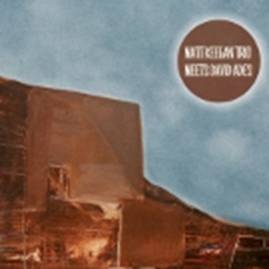 | Matt Keegan Trio - Meets David Ades (Chillum Records/Vitamin)
|
Following the Sydney saxophonist’s live 2008 trio album and then winning the 2011 Freedman Jazz Fellowship award for $15,000, Matt Keegan has released another trio CD with the addition of alto saxophonist Dave Ades. A highly acclaimed national tour promoting the recording has just concluded. The album opens with Etude 1, the first of four shortish, unaccompanied, classically-inspired Etudes spread throughout the recording where the voicings of the alto and tenor saxes are superbly arranged, sometimes in counterpoint, or beautifully harmonised, with the two horns creating a perfectly sublime sound. Several of these originals involve an Indian modality, an influence Keegan has investigated, and plans to continue studying in India, using the Freedman prizemoney. A piece entitled Shambati is an example incorporating Indian musicality, opening with a four note theme by the unaccompanied saxes before Dave Goodman’s drums and Cameron Undy on bass arrive to provide a subtle rhythmic foundation and an explorative bass solo is supported by the saxes quietly backgrounding the theme throughout. When Ades begins to solo in the same piece he builds a searing intensity with quick passages and speeds effortlessly into the alto’s high harmonics. Panchat Kat uses a ‘travelling’ style bass ostinato in an irresistible pulse under a theme infused with a raga-like essence where Ades and Keegan take their respective solos, the tenor’s lower register making a satisfying contrast to the alto’s tonality. Ades’s impassioned solo on Early Days lifts off with ultra-fast runs arcing through the progressions with a bluesy feel and unexpected twists climbing to a level of near delirium, while Keegan’s take on Gumbo demonstrates the composer’s ability to weave melodic alternatives while interacting with punctuated passages from drums and bass. Goodman’s drumming is showcased in Time and Time Again starting with a variety-laden drum solo which continues as the horns state a delightfully sagging, draggy theme. These compositions are quite exceptional, ranging from subtle Indian nuances to elegant, finely crafted Etudes for two saxophones, and a clutch of more orthodox, yet memorable jazz melodies. Keegan’s playing, leadership, and refreshingly different compositions delivered by top echelon players make this a milestone work in Australian contemporary jazz
    
|
by John McBeath
Previously published in The Australian Aug 2011 |
At first this seems a dark sombre affair but repeated listening reveals melodic hooks that trap you in the ecstasy of alto and tenor saxophone harmonies. With just bass and drums, space (a hallmark of Keegan) prevails and notably on the New Orleans flavoured blues ‘Gumbo’. Guest David Ades fans a storm with his piercing shrieks and tumbling cascades without a hint of cliché and must be considered one or our most original alto players. Punctuated by four brief etudes, the bluesy soulful tenor of Keegan at times, ups the ante to euphoric places while Goodman’s malleability of the beat is infectious.
   
|
by Peter Wockner
Previously published in Limelight August 2011 |
| Back to Index |
| 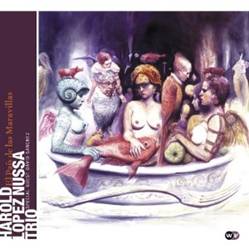 | Harold Lopez-Nussa Trio - El Pais de las Maravillas (World Village WVF017)
|
If you’re a fan of the Cuban piano trios of Chucho Valdes or Gonzalo Rubalcaba you’re going to enjoy this disc from rising star 26 year old Harold Lopez-Nussa who broke from his classical music roots and embraced jazz. He brings a youthful vibrancy to his compositions like the title track which showcases his nimble and explosive ability but they can also be melodically sublime like ‘A Camilin’ allowing the bass of another classical convert, Felipe Cabrera to gently daub the outlines and massage the heart. Guest David Sanchez’s meaty tenor saxophone adds extra dimension to four of these original works.
   
|
by Peter Wockner
Previously published in Limelight August 2011 |
| Back to Index |
| 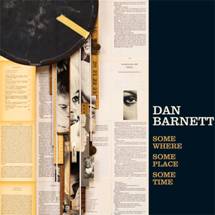 | Dan Barnett - Somewhere, Some Place, Some Time (www.danbarnett.com DB006)
|
Dan Barnett’s fifth album offers a kaleidoscope of vocal big band variety, from Latin, Cuban, swing, the blues and stompin New Orleans beats neatly arranged by saxophonist Andrew Robertson. Mose Allison’s Seventh Son gets a Cubano horn line while Bob Montgomery’s Warm Hearted Blues has Barnett’s trombone engaged in chatters, growls and low down utterances. Barnett’s own ‘Soup Song’ showcases his formidable scatting talents that hold traces of Mark Murphy and Joe Lane or nasily Jamie Cullum like vocals on the funky ‘Big Chief’. Solos are shared across the band generously even to the highly talented trombonist Jeremy Borthwick. Highly entertaining!
   
|
by Peter Wockner
Previously published in Limelight August 2011 |
| Back to Index |
| 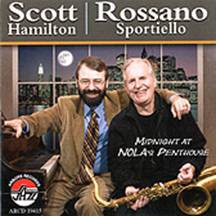 | Scott Hamilton and Rossano Sportiello - Midnight at Nola’s Penthouse (Arbors ARCD 19415)
|
Duets have been an integral part of jazz since the most famous of them all, Louis Armstrong and Earl Hines’ 1928 recording of Weatherbird. I’ve been hooked on them since first hearing Ruby Braff and pianist Ellis Larkins’ 1955 tribute to the illustrious song-writing team of Rodgers and Hart and enjoyed the great cornetist’s later collaborations with Larkins and Dick Hyman. Now I have found just as much musical satisfaction in the pairing of Scott Hamilton, arguably the finest living tenor player in the swing idiom, and Italian-born Rossano Sportiello who seems to be a master of all the classic piano styles. Hamilton, to whom melody is as natural as breathing, and the nimble-fingered Sportiello are a joy to the ear as they tenderly turn the 1950’s Four Aces “hit”, A Garden In The Rain, into a ballad of substance and sizzle through All God’s Chillun Got Rhythm. More please
    
|
by Kevin Jones
Previously published in Limelight Aug 2011 |
| Back to Index |
| 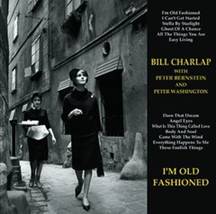 | Bill Charlap - I’m Old Fashioned (Venus VHCD-1043)
|
As an unabashed admirer of The Great American Songbook I always look forward to each new album by Bill Charlap who, recognised as his generation’s jazz piano standard bearer, is artistic director of Jazz In July in New York. His gifted interpretations have been documented on this label with his excellent New York Trio but here he fronts a drumless group with guitarist Peter Bernstein and bassist Peter Washington. In such an intimate setting, Charlap makes a mockery of the album’s title with solos that are sophisticatedly modern. It also allows Washington’s virtuosity to come to the fore.
   
|
by Kevin Jones
Previously published in Limelight Aug 2011 |
| Back to Index |
| 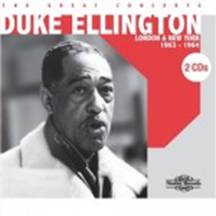 | Duke Ellington - The Great Concerts: London & New York 1963-64 (Nimbus NI2704/5)
|
Edward Kennedy Ellington is one of the pillars of modern music and any new release by the Duke is an event, especially the three concerts heard here _ two in London (1963-64) by his orchestra and a piano recital with rhythm in New York (1964). The Duke’s major soloists, alto saxophonist Johnny Hodges (Isfahan and Mood Indigo), trumpeter Cootie Williams (Caravan) and tenor saxophonist Paul Gonsalves (Diminuendo and Crescendo In Blue), are in top form and there’s a superb version of his suite Harlem. The excellent final concert includes a guest appearance by Willie “The Lion” Smith
    
|
by Kevin Jones
Previously published in Limelight Aug 2011 |
| Back to Index |
|
Melbourne International Jazz Festival 2011 In Review
New York jazz critic John Kelman recently wrote an article entitled “When Is a Jazz Festival (Not) a Jazz Festival,” examining the move towards pop, rock and other non-jazz performances appearing at jazz festivals. From Montreux to Montreal and Melbourne it’s a global trend, evident too at this year’s MIJF. Program Director Sophia Brous, a 25-year-old musician, vocalist and human powerhouse wanted to select an all-encompassing program and she delivered a well-judged musical mix. There were over 120 events by 400 performers, eleven venues, plus family and kids’ activities, masterclasses, free activities and concerts, jazz on film, a six-hour festival within the festival and nightly jam sessions.
The opening concert packed out Federation Square with Festival samplings including the famous American ten-piece Sun Ra Arkestra with their ‘planetary music,’ now led by saxophonist Marshall Allen in a flowing, red-sequined cape. Their music was a mash-up of styles: traditional, stride piano, rock, pop vocals, swing, Latin and some impressive avant garde with several highly talented soloists. Later, comedian Rusty Berther delivered his hip-hop version of a well-known song: Waltzing Matilda/She came from St Kilda/Her middle name was Hilda/And her father was a builder.
Amongst events previously uncommon at dedicated jazz festivals was an opening night production featuring four pop vocalists billed as singing great jazz standards. Leaving aside that Perry Como’s Catch a Falling Star hardly qualifies as a jazz standard, Eddie Perfect, Tex Perkins, Paris Wells and Kimbra were clearly out of their depth, despite the highly accomplished backing of Sam Keevers’s piano trio. Another inclusion that raised jazz purist eyebrows was American trumpeter Chris Botti, a populist kind of Kenny Gee of the trumpet with little originality, a massive technique – often with digital echo added – and Las Vegas style showmanship. Botti made his entrance by playing a few trumpet phrases then shot up to an impossibly high note and held it for what seemed an impossibly long time. Both Botti and the four vocalists attracted large audiences, fulfilling John Kellman’s premise, but if these didn’t appeal there was an almost oversupply of wondrous and diverse alternatives.
Foremost amongst the headliners was American saxophone colossus Sonny Rollins, now aged 80, who has lost none of his big, wide gorgeous tone but occasionally slipped notes and had a tendency to rely on single note repetition as he fronted a rather lacklustre backing group. Nevertheless it’s always a thrill to see a living legend perform and Rollins resembled a lovable, elderly uncle who moves with a pronounced swaying limp. Sadly the much anticipated, legendary American saxophonist Lee Konitz, aged 83, took ill and was cancelled.
American pianist, winner of the 2010 MacArthur Fellowship, Jason Moran introduced each of his trio’s numbers by playing a recorded track with which the band gradually joined in, following in style. But as the recording faded, the group began working the arrangement into brilliantly improvised interpretations. A Mississippi Delta blues went through transformations from a slow, soft rendition with beautifully extended deep, satisfying chords, to frantic racing piano passages as the electric bass bubbled excitedly and drums drove it all on. Another multi award-winning American pianist, Vijay Iyer – Jazz Journalists’ Association’s 2010 Musician of The Year – gave an extravagantly gifted solo performance of his compositions and an inspired version of Darn That Dream building dissonance to near breaking point. Iyer also appeared in Raw Materials, a duo with saxophonist Rudresh Mahanthappa, a 15-year association. Both of Indian parentage, they gave dazzling interpretations of their originals, the alto’s pure, unmuddied tone swooping and soaring above the piano’s percussive arpeggios in excursions where Indo-Asian modalities met western jazz and classical references.
Representing old school mainstream was American bassist Ron Carter’s trio. Aged 74, Carter has lost none of his remarkable agility over a smooth, warm repertoire of acoustic bass possibilities. Together with piano and guitar Carter sailed through a clutch of ‘oldies’ culminating in a bass-led signature rendition of John Lewis’s 1957 classic, The Golden Striker. A welcome detour into Eurojazz came from long established UK vocalist Norma Winstone with an Italian pianist and German saxophonist Klaus Gesing who performed exquisitely on bass clarinet. Winstone’s style is subtle, rich and evocative, sometimes singing her own eloquent lyrics and sometimes using her voice wordlessly on material from varied folk and classical sources delivered with a soft, jazz colouring. Further out in the jazz universe were two New York groups: altoist Tim Berne’s Los Totopos quartet featuring the stunning drumkit of Ches Smith with an armory of percussive devices, and also muscular drummer Jim Black’s AlasNoAxis in sax/guitar integrated jazz-rock style abstraction.
Overall the 2011 MIJF was a great success even allowing for the unavoidable time clashes between events at festivals, obliging patrons to leave some gigs early and arrive late at others. Sophia Brous is to be congratulated for once again delivering a remarkably diverse program where it seemed every conceivable taste in jazz was catered for and a sprinkling of truly legendary figures appeared. Organisers have announced box office takings were up thirty percent on last year, and the Victorian Government has confirmed funding for the MIJF over the next two years.
|
| by John McBeath
Previously published in the Australian July 2011 |
| Back to Index |
| 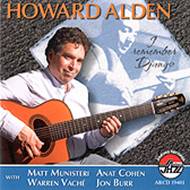 | Howard Alden - I Remember Django (Arbors ARCD 19401)
|
It is fitting that one of the most memorable of the many tributes to Django Reinhardt recorded since his death in 1953, is by Howard Alden, one of the greatest American guitarists of his generation. With strong support from rhythm guitarist Matt Munisteri and bassist Jon Brown, who played with Stephane Grappelli for many years, Alden recaptures the spirit of Django, his early inspiration. Highlights abound: Alden’s stunning solo tour de force on Nagsaki; cornetist Warren Vache nimble on a sparkling Who Cares but best of all, rising star Anat Cohen’s, (soprano) wonderful duet with Alden on Nuages.
    
|
by Kevin Jones
Previously published in Limelight July 2011 |
| Back to Index |
|  | Elly Hoyt - Pinnacle (Music PM0210)
|
The high praise for Elly Hoyt has not been exaggerated. The Tasmanian-born 24-year-old has all the attributes of a top jazz singer; taste, sensitivity and swing. Her class shines on this her first disc, which won this year’s Australian Jazz Bell Award for the best vocal album. Backed by the warm flugelhorn of John Hoffman, on two tracks, and especially pianist Matt McMahon an exemplary soloist and accompanist, and guitarist James Sherlock, she is a delight whether swinging through the neglected Jerome Kern gem Nobody Else But Me or gliding through a rhythmic My Foolish Heart.
    
|
by Kevin Jones
Previously published in Limelight July 2011 |
| Back to Index |
|  | Sarah McKenzie - Don’t Tempt Me (ABC Music ISBN 2770600)
|
The solo recording debut of Melbourne pianist, vocalist and composer Sarah McKenzie could not be more impressive. The opening track, a crackling You’d Be So Nice To Come Home To with a sizzling trumpet solo by Eamon McNelis, sets the scene for an outstanding showcase of her talents not only vocally and instrumentally but as an arranger and composer. With the addition of a gentle bossa nova rhythm, she transforms the maudlin dross of Love Me Tender into a ballad of substance. As the winner of the 2009 Generations in Jazz Vocal Scholarship at Mt Gambier (SA) held in conjunction with the James Morrison Scholarship, it seemed only appropriate the trumpeter should guest on the attractive Latin-flavoured title track, one of three of her compositions on the album. Tenor saxophonist Julien Wilson, another guest, also blows admirably on Dindi. But it’s McKenzie, with excellent backing, who holds centre stage. The warmth and maturity of her singing belies her 23 years but her piano playing is just as impressive. She has a penchant for effortless swing (I Won’t Dance) and digs into a rollicking groove on another of her originals, I’ve Got The Blues Tonight. Impressed? You bet! Sarah is something very special
    
|
by Kevin Jones
Previously published in Limelight July 2011 |
| Back to Index |
|  | Jeremy Pelt - The Talented Mr Pelt (Highnote)
|
Since its inception in 2007 the third album for Pelt’s post-bop/modernism quintet led by the gifted NYC trumpeter, triumphs over previous releases in its ballad intimacy and the groups tight dynamic. Achieved without inhibiting each instrumentalist to stretch the limits, and in some cases reach for the unreachable. Pelt has his own metallic and brash tone which at the higher end becomes grainy but finishes with a gorgeous gentle vibrato. Most are Pelt up-tempo originals and yes the sound has NYC attitude and complex signatures for rhythm underneath the horns but overall makes for challenging and compelling listening.
   
|
by Peter Wockner
Previously published in Limelight Magazine July 2011 |
| Back to Index |
|  | My Goodness McGuiness - Insular Peninsular(Rufus Records RF 089)
|
Trombonist Lucian McGuiness is a genuine genre hopper. All forms of jazz, hip-hop, rock, folk and world music have informed his sound and this band is just one of his projects. He contributes four originals to this album and conceptually his inspiration for this group is Bartok. Indeed the folk trace elements, classicism and modernism are all abundantly evident. Energy levels rarely escalate but the groove and melody are beautifully robust. There is an overarching pure quality to the McGuiness tone, coupled with a less is more approach, never overplaying, the line-up includes two percussionists rather than a drum kit creating crisp rhythms and space for long time collaborator Dan Junor on saxophone and Aaron Flower on guitar to improvise around some favourite melodies. Bowie’s Oh You Pretty Things is turned Latin by Fabian Hevia or the most distinctive instrumental version I’ve heard of Bing Crosby’s I Don’t Stand a Ghost of a Chance with you. Leonard Cohen’s Hey, That’s No Way to Say Goodbye puts you on location in an old western movie as Aaron Flower’s prairie guitar twangs against the clip-clopping hand drums. Brendan Clarke’s double bass has rarely recorded better than on this album.
   
|
by Peter Wockner
Previously published in Limelight Magazine July 2011 |
| Back to Index |
|  | Pascal Schumacher Quartet - Bang My Can (Enja)
|
Schumacher is a vibraphone player and a laureate of three European conservatories, extending his music making way beyond jazz. When the vibraphone and the piano are played in unison and allowed to resonate they provide an exquisite bell like resonance that permeates these originals contributed by each band member. Pianist Franz Von Chossy allows his classical background to seep through his improvisations while drummer Jens Duppe shows a dextrous touch with the brushes. A highlight ‘No Dance on Volcano Ashes’ opens with a hopping bass solo which recedes and smoulders before vibes, bass and drums erupt in a luminescence of sound.
   
|
by Peter Wockner
Previously published in Limelight Magazine July 2011 |
| Back to Index |
| 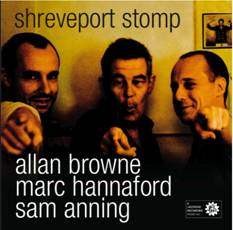 | Browne, Hannaford, Anning - Shreveport Stomp (Jazzhead Head140)
|
Following their winning of the 2010 Bell Award for Homage as Best Classic Jazz CD – prize money from which was used to fund this live recording at Bennett’s Lane, Melbourne – these three supereminent musicians have produced an absolutely stunning album. With seemingly unlimited capabilities the trio of piano, bass and drums, explores, deconstructs and reinterprets a most interesting and varied collection of seven classic pieces. The opener, Thelonious Monk’s Bemsha Swing starts with Marc Hannaford’s solo probing piano in a distant parallel to Bill Evans’s 1963 version from Conversations With Myself, but when drums and bass arrive the mix begins to intensify as the piano races excitedly and the ensemble takes on a wild, unstructured style before slipping into a Latin rhythm with feverishly fast piano runs. Jelly Roll Morton is represented with Shreveport Stomp taken slower than the original but giving Hannaford an opportunity to apply modernistic extended harmonies and embroiderings to the tune as he moves into a wonderful exercise in phase- shifted stride piano and out again. The standard, Body and Soul begins with Sam Annings’s investigative bass solo, perhaps slightly under-recorded, introducing the piano’s superbly elasticised slow evocation of the lovely ballad, a triumph of instant, surprising composition. The three musicians play excellently throughout, with Hannaford’s performance once again placing him in the top echelon of Australia’s very best jazz pianists
    
|
by John McBeath
Previously published in the Australian July 2011 |
| Back to Index |
| 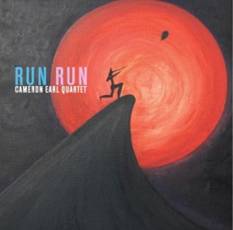 | Cameron Earl Quartet - Run Run (Newmarket New3293.2)
|
The material for this album by newly-formed Melbourne quartet, led by seasoned trumpeter Cameron Earl, has been composed by the leader over the past six years. The style is mainstream with an infusion of rock influences where the trumpet, or flugelhorn is supplemented and underpinned by guitarist Stella Skinner. Bassist Steve Temple and Earl’s younger brother Matt on drums complete the piano-less group. Many of these originals are based around what sound like repetitive riffs, although Skinner’s guitar injects some differing, original ideas. The opening title track, Run Run is an example where an eight bar theme is overly repeated by the trumpet, but the guitar solo diverges more interestingly. Sharp is more successful with guitar interweaving melodic ideas as the trumpet states a less riff-based theme, and White and None benefits from the use of muted trumpet and some more exploratory improvisation. A drum solo intro opens Cam And Conceal, then lapses into a ‘tok-tok’ rhythm behind the trumpet’s melody line but again it’s the guitar’s invention and vitality that lifts the ante. A better delivery of narrative interpretation appears on People Say with rock-oriented drumming, slightly distorted energetic guitar, investigative trumpet, and a sequence in three four time. It’s back to a riff sound for the final track, Pimpstagumba with the trumpet’s tendency to overuse tremolos
  
|
by John McBeath
Previously published in the Australian July 2011 |
| Back to Index |
| 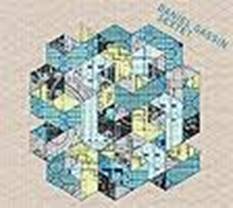 | Daniel Gassin Sextet - Which Way (Music/Fuse WWM012)
|
Melbourne-based pianist Daniel Gassin of French and American parentage describes his original music on this album as a meeting between French and American jazz styles. To those influences could be added an Afro component on two tracks where Felipe Cornejo plays bata drums, an hourglass shaped drum from Nigeria via Cuba. Trumpet work is shared between Cam McAllister on three tracks and Pat Thiele on five, with Phil Noy on alto, Anton Delecca on tenor, Michael Story on double bass and drummer Craig Simon. The music is strongly energetic both in ensemble and solo passages with appealing arrangements that sometimes score the horns in a harmonic backdrop to the piano. An outstanding solo comes from Noy’s alto on Crossover where, after an out-of-tempo piano opening of rich harmonic progressions, the group takes up the theme in a medium-slow tempo, dissolving into the alto’s gentle balladeer start to an increasingly involuted sequence as the piano provides a varied backing beyond mere comping. Delecca’s alternately racing and sliding tenor takes the solo honours on Roundtrip with piano, bass and drums continuing their interweaving accompaniment. A short, vibrant bass intro to Y-Tune brings a bata drum reinforced rhythm section into an Afro-Cuban style piece, while New Song features an intelligent, gradually building trumpet solo from Thiele against a Latin beat. Inspired playing and arrangements of exceptional compositions
   
|
by John McBeath
Previously published in the Australian July 2011 |
| Back to Index |
|  | Fran Swinn Trio - Every Dog (Independent)
|
Guitarist Fran Swinn wrote six of these nine tracks for her trio, one is from her bassist Tamara Murphy, another by the drummer Ben Hendry, plus the Paul Simon hit Cecilia. The album was commissioned for ABC’s Jazztrack program and mixed and mastered by presenter Mal Stanley. The opening track, the leader’s Alien To Me, is a bluesy theme expertly punctuated by the drums, stepping up to double time for the middle section guitar solo. Cecilia opens with guitar offering a manipulated version of the familiar song using slight distortion and occasional dissonance, features that are maintained into an explorative solo with strong rhythmic support from bass and drums. Murphy’s composition Für Oigen uses an ostinato bass line, augmented by skilful drumming under Swinn’s constantly stoking guitar before a bass solo of intricate intensity. Jazz players use syncopation in different ways: sometimes riding the beat, or playing slightly ahead of, or marginally behind the rhythm, providing subtle contrasts in pulse. Much of the guitar work here is fractionally behind the beat and would have been improved by more variation in rhythmic approach. Nevertheless the melodic ideas are inventive and the arrangements produce a cohesive trio sound, well demonstrated on E is For Everything where a strong guitar solo is followed by a thoughtfully rhythmic one on acoustic bass and smart drum to guitar exchanges
  
|
by John McBeath
Previously published in the Australian July 2011 |
| Back to Index |
|  | Joachim Kuhn, Majid Bekkas and Ramon Lopez - Chalaba (ACT 9502-2)
|
The trio’s third album is their finest to date. Whilst much of this recording, courtesy of Moroccan guembri and oud master Majid Bekkas showcases the North African music Gnawa and how that 16th century three string bass (guembri) might relate with what we call blues and jazz, other influences like Indian, Caribbean and Middle Eastern spill over to naturally inform the multilateral directions. Spanish percussionist Ramon Lopez plays drums and tabla while avant-garde pianist Joachim Kuhn allows the rhythms and the desert spirit to take him to remote corners of jazz improvisation and admirably adds alto to the mix in one track.
   
|
by Peter Wockner
Previously published in Limelight June 2011 |
| Back to Index |
|  | Portico Quartet - Knee-deep in the North Sea (Real World )
|
Buskers know how to make hay while the sun shines. After two years on the streets of London the quartet recorded this Mercury Music Prize nominated album in 2007. Following the success of the groups follow up ‘Isla’ and their live performances, the debut is now re-mixed by Abbey Road producer John Leckie into a deluxe package with three extra live tracks recorded in Copenhagen in July 2010. Portico’s warm soothing sound stems from an instrument that has only been around for 11 years; the steel hang drum. Its tropical sound sits somewhere between the thumb piano and the steel drum but at times even sounds like a banjo. Both Duncan Bellamy and Nick Mulvey use a number of these ‘welded woks with dimples’ along with Jack Wylie’s somewhat Nordic bent soprano and Milo Fitzpatrick’s double bass to create captivating melodies, dramatic shunts and momentum changes and numerous snappy percussive passages.
   
|
by Peter Wockner
Previously published in Limelight June 2011 |
| Back to Index |
| 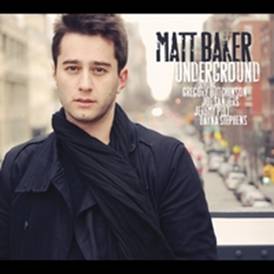 | Matt Baker - Underground (www.mattbaker.com.au)
|
The Australian pianist has been based in NYC for nearly 11 months and this recording (his fourth as leader) took place in March 2011 providing a recent barometer reading of his development since his previous Swiss alps inspired orchestral outing. On this occasion he splices three tasteful standards amongst an impressive selection of originals utilising a fine cast of New York talent including the muscular trumpet of Jeremy Pelt and the breadth of tone in Dayna Stephens’s tenor. Sensitivity and understatement is the order of Baker’s touch and this warmth radiates through solo, trio and steelier ensemble pieces.
   
|
by Peter Wockner
Previously published in Limelight June 2011 |
| Back to Index |
|  | Luke Howard and Janos Bruneel - Open Road (Which Way Music/Fuse)
|
Melbourne pianist Luke Howard specialises in a jazz approach to his tranquil, relaxed compositions, demonstrated on his 2010 trio album Meadowlands. His current duo production, beautifully recorded in the famous Rainbow studios in Oslo, with outstanding Belgian bassist Janos Bruneel, virtually sings with serenity and inspired interpretation. The opener Vita Bis (Second Life) introduces the luscious sounds of Bruneel’s acoustic bass moving with an abstracted, yet descriptive piano in an intelligent, pastoral narrative. An aching solitude pervades the ominously entitled She Left a Note as the solo piano works through its melancholic theme, while the title track celebrates the joyous potential of an Open Road with a piano of possibilities and a travelling bass solo. Fourth Floor starts with another highly expressive bass passage leading the piano into deeply rich chords beneath a satisfyingly uncomplicated melody. Stargarter uses a tangential, restrained style of cheerfulness through a jazz-inflected, semi-classical pathway of descending progressions aided by the substantial grounding of the bass. The bass is unaccompanied for Bruneel’s short composition of just under two minutes Ay Yildiz, providing an opportunity to savour his ravishing sound quality and graceful technique. This is an album of outstanding acoustic quality and a high level of musicianship with original pieces devoted to unhurried creative discernment – a perfect accompaniment to dreamy contemplation
   
|
by John McBeath
Previously published in The Australian June 2011 |
| Back to Index |
| 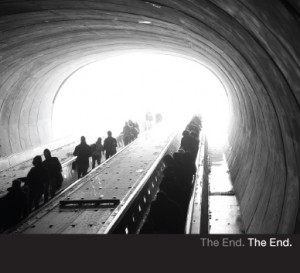 | The End - The End (Newmarket Music)
|
Melbourne guitarist Tim Willis formed his Australian quintet The End in 2009 after working three years in Paris and touring Europe. He says the group is heavily influenced by rock, and it is, but not of the cochlea-crunching variety. Comprised of some fine Melbourne up-coming talent, there are two saxophones in the front line: Jon Compton on alto and John Felstead on tenor. Gareth Hill plays acoustic bass and Nick Martyn is on drums. Of the ten original tracks, several have a post-bop, rock fusion feel including Dervish where the uptempo pace is maintained by a guitar riff and rock drumming under the two saxes clever unison theme. Another example, although slower, is Dark Cloud where a bop-style theme is underpinned by back beat drumming and both alto and guitar contribute genre-straddling solos. The opener Fiddling While Rome Burns, has a catchy, raucous theme set to a guitar, bass and drums ostinato. A quieter Sleep starts with some smart bass work and high, chiming guitar before the saxes bring in the tranquil melody culminating in stabbing chords to introduce a racing alto solo and another on Willis’s quick-thinking guitar. Good People is also a slower track with a subdued alto start and sympathetic brushwork from the drumkit. A fine debut album of accomplished originals from a young group with an assured future
   
|
by John McBeath
Previously published in The Australian June 2011CCC
| 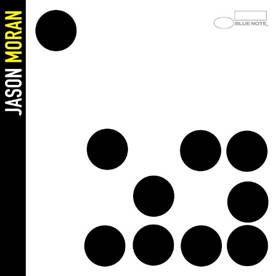 | Jason Moran and The Bandwagon - Ten (Blue Note/EMI)
|
Currently on his third visit to Australia, appearing at the Melbourne International Jazz Festival, US pianist Jason Moran celebrates ten years with his trio, The Bandwagon – Tarus Mateen on bass, and drummer Nasheet Waits. The thirteen tracks are mostly Moran originals, but with Monk, Bernstein, and a couple of others also represented. Blue Blocks, a commissioned work, opens in a slow, unusual blues style, and led by acoustic bass soon doubles the tempo, then as bass and drums hold that rhythm Moran races ahead doubling the tempo again with scarcely believable knuckle-cracking runs of eight notes per beat, dropping back to the starting tempo to close out. There are two versions of Study No. 6 by Conlon Nancarrow (1912 – 1997) both drawing heavily on classical themes, played firstly uptempo, then with a more flowing, beautifully textured approach. Monk’s Crepuscule With Nellie employs Mateen’s bass moving elegantly with rich piano chords before Moran’s characteristic fast-running sequences, always purposefully directed, followed by a stomping piano style to back a speeding bass solo. Gangsterism Over 10 Years, a Moran composition, draws on soul influences with a fast-moving melody line and a flurry of stabbing notes and chords as the drums supply a varied, energetic backdrop. A Jaki Byard composition, To Bob Vatel of Paris is a masterful display of stride piano imbued with grooving intelligence
    
|
by John McBeath
Previously published in The Australian June 2011 |
| Back to Index |
|  | Briana Cowlishaw - When Fiction Comes to Life (Planet/MGM)
|
Sydney vocalist Briana Cowlishaw has achieved a lot in her 22 years, appearing regularly on the Sydney jazz scene with many outstanding musicians since 2007. This debut album was recorded in late 2010 in New York with some of that city’s greatest jazz performers: Aaron Goldberg on piano, bassist Rueben Rogers, drummer Gregory Hutchinson, Mike Moreno on guitar, and the amazing young trumpeter, Ambrose Akinmusire. There are eleven of Cowlishaw’s originals and two standards, mostly in ballad style, plus several in soft Latin rhythms. The fastest track is Four Views of a Secret, opening with a few bars of scat leading into a strongly swinging piece containing some excellent trumpet work and a smart bass line behind Cowlishaw’s assertive vocals. Her originals are advanced in structure and harmonic content but Cowlishaw’s potent expression gives the songs an accessibility, partly because they recount experiences of every day life and partly due to her clarity, pitch and phrasing. Hoagy Carmichael’s lovely ballad Skylark receives hypersensitive treatment with its interpretive lyrics assisted greatly by Goldberg’s languid piano and Akinmusire’s tenderly soulful trumpet. The Little Things moves through several different rhythms, starting in a Latin style, and shaking down to a forceful straight-four climax displaying Cowlishaw’s ability to glide effortlessly from vocal fragility to powerful authority. A formidable debut from a vocalist and composer of topflight talent
   
|
by John McBeath
Previously published in The Australian June 2011 |
It would be very easy for a young angelic voice as good as this, in debut, to release a collection of contemporary soft rock covers with jazz backing and then rely on her stunning good looks. No. Cowlishaw, heavily influenced by Joni Mitchell, chooses to take her candid original material to NY’s Aaron Goldberg trio and put her musical heart on her sleeve. Sure, bravado alone doesn’t make a good disc and some of the lyrics lack refined cohesion with melody but when stars align, as they do frequently here, sparks fly. Notably, guitarist Mike Moreno is the most assured soloist.
  
|
by Peter Wockner
Previously published in Limelight August 2011 |
| Back to Index |
| 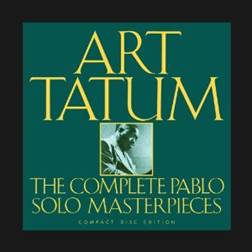 | Art Tatum - Solo Masterpieces (Pablo 0600753312001)
|
The late American pianist and jazz educator Dr Billy Taylor once said: “Every Art Tatum recording is essential”. This eight-CD set of magnificent solo piano is more than essential. It is a landmark in recorded jazz and popular music. Tatum’s collaboration with jazz impresario Norman Granz spread over less than three years (1953-56) produced recordings which set a standard, rarely equalled then and seldom since. One can only marvel at his genius; the fantastic technique, his harmonic variations and delicate light touch which resulted in the beautifully idiomatic version of Tenderly and the rocketing treatment of Elegy, one of his showpieces. Tatum was given a free hand by Granz in both the choice of material and the number of selections recorded. There were no rehearsals, no time limits. He just sat at the keyboard and played. The 121 tracks here (plus four from a 1956 concert at the Hollywood Bowl) encompass the best in American popular music including such Tatum favourites as Begin The Beguine and Someone To Watch Over Me. This indispensable set is a fitting testimonial to one of the greatest pianists in jazz whose early death at the age of 47 in 1956 stunned the music world.
    
|
by Kevin Jones
Previously published in Limelight Magazine June 2011 |
| Back to Index |
| 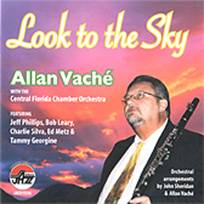 | Allan Vache - Look To The Sky (Arbors ARCD 19396)
|
This album epitomises what first attracted me to jazz; swing, melody and the clarinet, especially the music of Benny Goodman and Artie Shaw. The rich tone of Allan Vache, one of the best of today’s Goodman acolytes, has seldom sounded better. He swings exuberantly with a quintet (For Once In My Life) and his and pianist John Sheridan’s arrangements for strings and woodwinds provide the perfect framework for Vache’s melodic improvisation whether venerable standards (Long Ago And Far Away) or the music of Brazil by Antonio Carlos Jobim (Someone To Light Up My Life and the title track)
    
|
by Kevin Jones
Previously published in Limelight Magazine June 2011 |
| Back to Index |
| 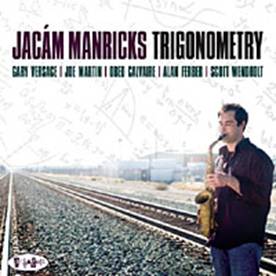 | Jacam Manricks - Trigonometry (Positone PR8064)
|
Brisbane born saxophonist/composer Jacam Manricks, New York based for the past ten years, comes from a musical family of Sri Lankan/Portuguese extraction. The first striking thing about Manricks’s NY sextet is the intellectually stimulating quality of his compositions, followed closely by the leader’s pleasing alto tone, ceaseless ideas, and advanced technique. This is a tightly interlaced group of respected NY musicians with a front line of Manricks, Scott Wendholt on trumpet and trombonist Alan Ferber. The title track Trigonometry, like its namesake in maths, explores triangular relationships and angles, in this case in 7/4 time and features the alto gliding over the rhythm section of Gary Versace on piano, bassist Joe Martin and drummer Obed Calvaire who socks a rockfall foundation under the closing, off-beat frontline chord stabs. Cluster Funk is certainly funky, again in 7/4 time, with a soul-infused piano and trumpet lead, moving into a grooving, building, trumpet solo then a diagonal approach from the alto. The only non-original on the album is Eric Dolphy’s esoteric piece Miss Ann which loses none of its impact when Manrick’s purity of tone contrasts with Dolphy’s original raw-edged attack; the hyper-fast, unpredictable Dolphy-style jagged flow is maintained by the alto and Martin’s bass keeps the momentum alive in his solo.
   
|
by John McBeath
Previously published in The Australian May 2011 |
| Back to Index |
| 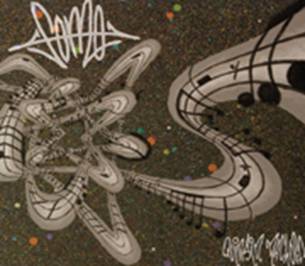 | Quinsin Nachoff - Forward Motion (FoMo) (Independent/www.quinsin.com)
|
Canadian born, now New York-based tenor saxophonist Quinsin Nachoff’s quartet Forward Motion has released a debut album of contemporary jazz with rock and fusion influences using Adrean Farrugia on Fender Rhodes as an anchoring point. Making up the quartet, trumpeter Russ Johnson and Mark Kelso on drums respectively add melodic and rhythmic context to Nachoff’s impressive originals. The rock influences are mostly of a cerebral, soft rock extraction skilfully infused in a jazz approach. Since the group is bass-less some of the Fender Rhodes contribution provides a bass line which works particularly well with Kelso’s coefficient percussion. The opener, Devil’s Advocate starts with staccato stuttering between trumpet and tenor before the angular theme is stated by the two instruments leading to lengthy solos from each in a ‘cool’ jazz style. The title track fuses a celestial theme with a Chick Corea-like analogy and after a probing trumpet solo features driving drum work interspersed with ensemble chord stings, moving into intelligent solos from keyboard and tenor. In African Skies a modal theme is underpinned by an Afro-rock rhythm and Nachoff’s tenor solo is emblematic of the album’s retroflexive approach where a blaring, blasting rock focus is replaced by intelligent, questing and graceful ideas.
   
|
by John McBeath
Previously published in The Australian May 2011 |
| Back to Index |
|  | Song Fwaa - Ligeti’s Goat (Independent FWA001)
|
To label this album as experimental would be a vast understatement. Everything about this Sydney trio is esoteric: ‘Song Fwaa’ is a rough phonetic of the French ‘sang-froid,’ literally cold blood, but meaning self-possession or unflappability. Song Fwaa’s music is an extraordinary collection described as “conversational, viewing music as an open vessel into which ideas are dropped and stewed.” It’s a tribute to avant classical composer Gyorky Ligeti (1923 – 2006) whose body of advanced works is most known for excerpts on the soundtrack of 2001 A Space Odyssey. The trio of alto saxophonist Martin Kay, guitarist David Reaston, and drummer Jamie Cameron has adopted a Ligeti-style approach, sometimes using dense webs of texture suspended in space and time. The title track, “exploring the eating cycle of a goat,” opens with murky chords and percussive effects in an odd time signature with the alto floating tranquilly above, then slides into glissandos moving upward against a heavy, swinging drumkit as a controlled chaos emerges, to be grounded by a walking rhythmic passage with unpredictable jazz-like phrases from the alto. Motility begins with a classical style alto cadenza which dives into busy traffic mode where percussion provides heavy transport sounds as the piece moves in and out of rhythm. This investigative album won’t appeal to everyone but its diverse styles and eclecticism are skilfully and originally explored
   
|
by John McBeath
Previously published in The Australian May 2011 |
| Back to Index |
|  | Jane Monheit - Home (Emarcy B0014700-02)
|
For those who have followed Jane Monheit’s career since she was runner-up at the age of 20 to the late Teri Thornton in the 1998 Thelonius Monk Institute vocal competition (Roberta Gambarini was third) this is the album we have been waiting for. At 33, 11 years after her recording debut, she has come of age as a jazz singer. It shows in the confident way she tackles a lyric with a voice like a taste of honey with a shot of whiskey and her sense of dynamics and especially scat singing which befits someone who cites Ella Fitzgerald and Mel Torme among her early influences. There are many highlights: the spirited feistiness of Everything I Have Is Yours with Mark O’Connor’s violin; plumbing the emotional depths in I’ll Be Around; and the romanticism of There’s A Small Hotel with lovely piano by Michael Kanan. All show she’s the real deal
   
|
by Kevin Jones
Previously published in Limelight May 2011 |
| Back to Index |
| 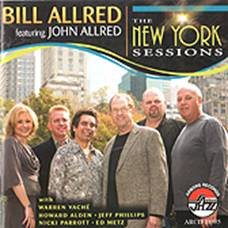 | Bill Allred Featuring John Allred - The New York Sessions (Arbors ARCD 19395)
|
A strong lineup headed by guitarist Howard Alden and bassist Nicki Parrott and guest appearances by his son John and cornet great Warren Vache help trombonist Bill Allred reprise a 50 year career in traditional jazz and swing in an enjoyable mainstream session. Father and son harmonise well together on trombones (shades of Jai and Kai on Lullaby of Broadway), the senior Allred has fun with Parrott as they sing Dave Frishberg’s I Want To Be A Sideman, and the younger Allred and Vache rejuvenate the venerable Sweet Sue into a real swinger.
   
|
by Kevin Jones
Previously published in Limelight May 2011 |
| Back to Index |
| 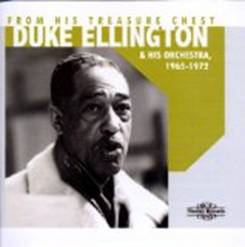 | Duke Ellington - From His Treasure Chest 1965-72 (Nimbus NI 2736)
|
First issued on the MusicMasters label in 1991, this reissue of what Duke Ellington used to refer to as his “stockpile” (unreleased non-commercial recordings) is a valuable addition to the Ellingtonian discography. As well as original material, the Duke revisits his New Orleans Suite in Milan, Italy in 1970. He had written it earlier in the year. Clarinet virtuoso Jimmy Hamilton shows he was also a fine tenor soloist on an extended The Old Circus Train and the Duke is showcased with a six-man reed section on the charming Woods, originally written as a background to one of his most popular songs. Timeless
   
|
by Kevin Jones
Previously published in Limelight May 2011 |
| Back to Index |
| 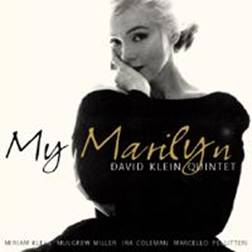 | David Klein Quintet - My Marilyn (ENJA ENJ9422.2)
|
Originally released in 2001 and now available in Australia, this is a somewhat charming attempt to recast the perceived misunderstood Monroe into a figure of greater substance using the songs associated with her film catalogue but in a jazz setting. The sometimes breathy, sometimes latter day Billie Holiday chanelling vocalist Miriam Klein, carries the blonde’s character admirably but the highlights are the instrumentals including Porter’s ‘My Heart belongs to Daddy’ and the Cahn and Van Heusen ‘Specialisation’ where Swiss saxophonist David Klein, pianist Mulgrew Miller and bassist Ira Coleman get to extend their reach on what ultimately is less than challenging reminiscences
  
|
by Peter Wockner
Previously published in Limelight May 2011 |
| Back to Index |
| 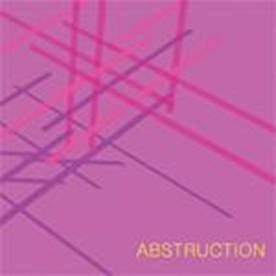 | 3ofMillions - Abstruction (Rufus Records RF094)
|
Following in his own intrepid paths of Triosk and the Alister Spence trio, Adrian Lim-Klumpes latest foray into improvised acoustic electronica is 3ofMillions featuring piano, Rhodes, electronics, Abel Cross electric bass and Finn Ryan on percussion. Primal urges or intuitive spasms from Lim-Klumpes and Cross are engulfed by the deepest canyons of groove from the drummer. Then vibratory disturbances make way for ghostly intimidating whispers. The highlight is the ten minute finale ‘Acquiescence’ where microcosmic electronic distortions shoot out from a velvety Rhodes backdrop. 3ofMillions are choosing the many unlikely and challenging sonic options from millions of possibilities
   
|
by Peter Wockner
Previously published in Limelight May 2011 |
| Back to Index |
East Coast Blues & Roots Music Festival (BluesFest) 2011
You just don’t know where to start when you’re covering an event as huge as the twenty first “East Coast Blues & Roots Music Festival” (BluesFest) at Tyagarah Tea Tree Farm (10km north of Byron Bay). Six days, five stages, hundreds of gigs and tens of thousands of very enthusiastic visitors.
I’ve been on many music festivals, but this is my first Byron Bay BluesFest. It’s hard to pin down what is more important – writeing about individual artists and gigs, about their musical qualities or to try to express the overall vibe of the events itself – I will try to do both. I will focus more on local and up-and-coming musicians. I’ll give you my take on some of the gigs in a chronological order (I was able to attend four days only) – and will write only about the gigs I really liked – forgive my elated tone.
Oh, and just one more thing before I start - JazzAndBeyond usually does not cover rock. That said, there were some very fine rock performances of all different styles and varieties. But being the old rock die-hard that I am (come on, do you remember who was a lead guitarist in “Nazareth” in 1975?) I will cover two or three - it’s just too hard to resist.
FRIDAY -my first day at BluesFest. Thousands of gumboot-clad music fans are entering via several gates. Slightly muddy pitch, nice aroma of freshly-cut grass everywhere.
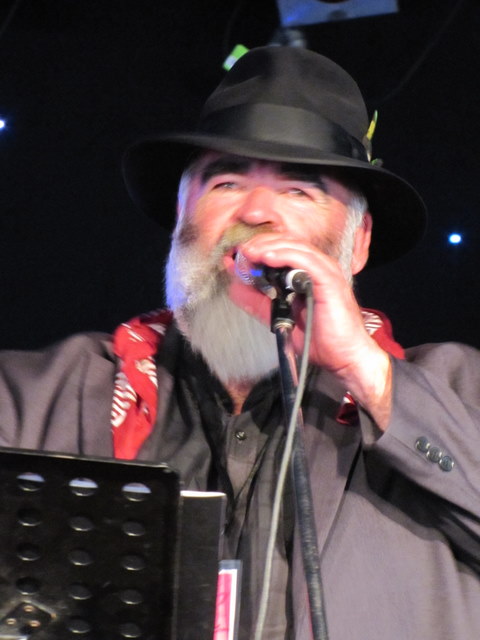 | 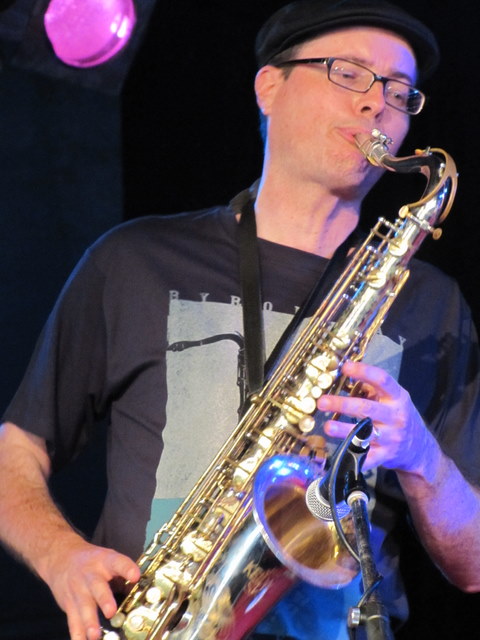 |
Juke Joint – 15:00 – Bob Abbot and The Fabulous Green Machine
Look at the photo – Mr Bob Abbot – the Sunshine Coast Mayor since 1982. This is not a mistake – he also very active as a leader of a local blues band. A great bear of man, snazzy in appearance, he plays harp and growls stomping blues with his mates. After seeing his “Got My Mojo Working” (Muddy Waters) you can be sure that the Sunshine Coast district is in a rock-solid hands. |
Local soul queen Lisa Hunt (http://www.foreversoul.com/) joined the group for several numbers. Her rendition of “You make me feel like a natural woman” with high voltage screaming tenor sax and strong, yet sexy female voice dialogs… well, I can’t speak for the women, but it definitely made every bloke feel like a natural man. Green Machines’s saxophonist (sorry, could not find his name) – was one of the finest of the whole festival.
APRA – 20:15 – U Blues Band (The Universal Blues Band) (http://www.facebook.com/group.php?gid=2339659180).
This blues band from Singapore, who were semi-finalists at the "International Blues Challenge" in Memphis in 2003, proves that Blues is the one of the most universal music genres in the world. Their highly entertaining approach is impeccable – the timing, sound, attack, rhythm are all perfect. Listening to their tunes, I think I made a scientific discovery – there is a Blues Gene and people of all cultures have it, but in some people it is just been a bit dormant (for now!). This gig overlapped with BB King, so everyone kept checking their watches - and not leaving!
APRA – 21:20 – Ray Beadle and his Band (www.raybeadle.com)
Despite very unfortunate time slot (overlapping with B B King) it was truly one of the best shows! Ray (lead guitar) and his band, all from Sydney, brought a dynamic mix of hits – some original, others well known. Pretty soon, it was hard to tell who was enjoying the performance more – the musos, or the fans. Whatever the case, by the end of the show, both groups had fused into one – and the energy was sizzling.
I know, I know – it is not a good idea for reviewer to compare different musicians – but at the back of my mind, as a kid from a school rock-band (many years ago, in a past life, in the USSR) I always do that…Ray was definitely the best guitarist of the Friday.
Mojo – 22:00 – Grace Jones (www.theworldofgracejones.com)
I think about this gig have to write in CAPITAL LETTERS ONLY. IT WAS AN EXOTIC PAGAN RITUAL. GRACE WAS THE HIGH PRIESTESS, AN ANCIENT GODDESS, BLACK PANTHER, SUPERMODEL – AND ON TOP OF IT ALL HER UNMATCHABLE CONTRALTO-VOICE, HER PLASTICITY AND ENERGY! DIFFERENT STYLES, COSTUMES, INCREDIBLE VISUAL EFFECTS – FROM WELL KNOWN PIAZZOLLA’S ‘LIBERTANGO’ TO ‘HURRICANE’ FROM THE LATEST ALBUM, TO BLUES, TO REGGAE NUMBERS – YOU COULD CLOSE YOUR EYES AND FIND YOURSELF IN JUNGLES, IN JAMAICA OR MAYBE IN ANOTHER GALAXY.
HOLD ON TO YOUR CHAIRS WHEN SHE SINGS ‘HURRICANE’!
Jambalaya – 22:50 (and Saturday 22:00) – Melbourne SKA Orchestra (http://www.melbourneskaorchestra.org)
Started in 2003 by Jamaican music historian Mohail Slim and drummer Nicky Bomba, now grown to 26 member big-band, MSO gets together only rarely (maybe once a year), but when they do - their shows are invariably unusual, engaging and enjoyable. To be honest, this is the only gig on BluesFest I allowed myself to see twice! Led by Nicky with his very eccentric style, MSO produces music of the highest, even for big-band (synchronisation, sound, etc) standards. This, of course, did nott stop them from going wild on stage. Their slick, black attire didn’t get in the way of their creating absolute chaos on the stage, moving, dancing, shaking, grooving, - sometimes queuing behind the main mike to get a solo in.
Mixing different styles – SKA, reggae, tracks from James Bond movies – MSO and their international guests, among them “Miss Nadeen” from Haiti – huge Aretha Franklin’s style voice - smashed out two very memorable gigs, the second drawing a crowd four times as big as the first. Nicky Bomba had complete crowd control – people were gladly following all his orders “turn back, count to four, jump, dance, shake hands, etc” – total clinical mass happiness! I highly recommend them to everyone regardless of age (a very good way to introduce kids to big-band/orchestral music).
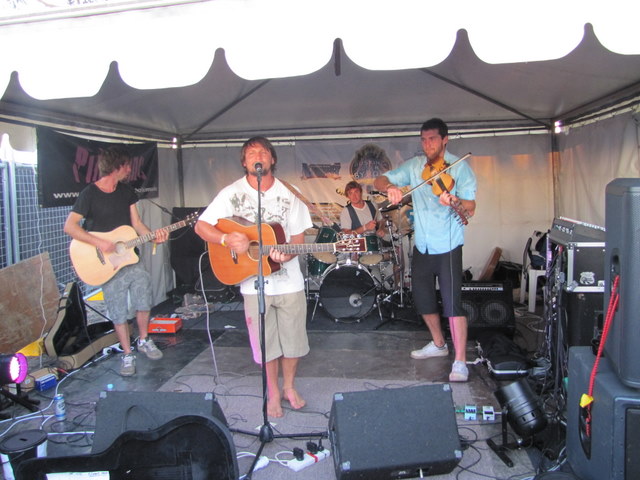 |
Busking Competition had many incredibly bright acts - even though I could see just a fraction of them. A local band "Little Province" (http://www.myspace.com/alittleprovinceinchina) was one to remember – made up of drums, two acoustic guitars plus violin and vocals. Playing original material they gathered very appreciative |
crowd that outsized many of the official gigs.
SATURDAY - warmer and drier than previous day.
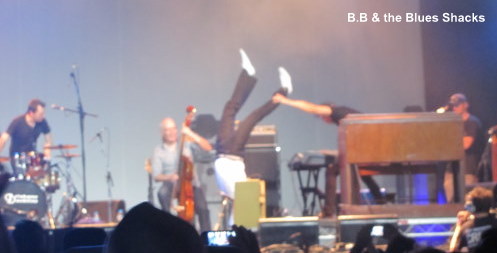 |  |
Juke Joint – 20:30 - B.B & the Blues Shacks (http://www.bluesshacks.com)
One of the best, if not the best, European (Hildesheim, Germany) traditional blues bands, made up of brothers Michael (vocal, harp) and Andreas (guitar) Arlt plus Bernhard Egger (drums), Henning Hauerken (bass) and |
Dennis Koeckstadt (keys). The style? Something along the lines of Otis Rush or Eddie Cochran. The energy? Maybe the most dynamite performance of the whole festival! With high class musicians, lots of really good guitar solos, vocal and keyboard together with some very spectacular acrobatic tricks. I’ll try to give you a sketch: Andreas is playing a long guitar solo with heaps of string bending and pulling. It is coming to its climax (you know it’s going to finish, but you really don’t want it to), then Michael runs along the stage and jumps head-first towards the keyboard – pulls himself into handstand, starts falling, but Dennis catches one of his legs, not interrupting playing his piano (see the picture) and, obviously, Michael continues his singing. Can you imagine what happened to the crowd?!
APRA 20:00 - Nat Col and the Kings (www.myspace.com/natcolkings)
The Nathan Cavaleri and Col Hatchman band. Blues plus rock. Nathan represents the blues – though still young, he has already collaborated with many blues legends (including a tour with B B King when he was just 15). His guitar technic, his voice is awesome, his song-writer skills supreme. Col, the Drummer, brings the very deep and serious rock. Dynamic, creative, versatile - and busting a chiselled bare torso - his aura is overpowering. A very remarkable group indeed.
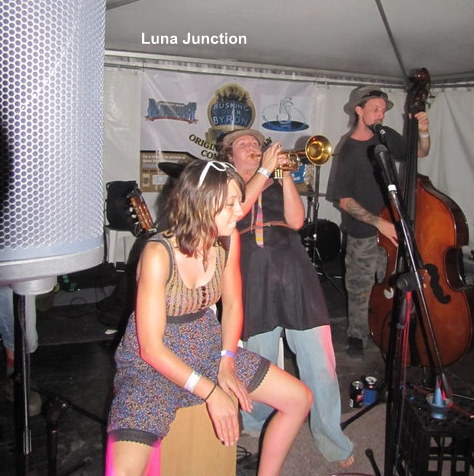 |
Busking Competition revelation – “Luna Junction” (www.myspace.com/lunajunction, www.facebook.com/event.php?eid=214903028520570) – Tweeds’ answer to Sydney’s Messier Camembert. A crew of local multitalented musicians, led by singer/trumpeter/flutist Shani Forrester - they play original and fresh mixture of folk, gypsy and cabaret. Although the main part of their performance went on in near-complete darkness (Busking |
Tent did not have lighting) the audience did not want them to leave for a long time.
SUNDAY
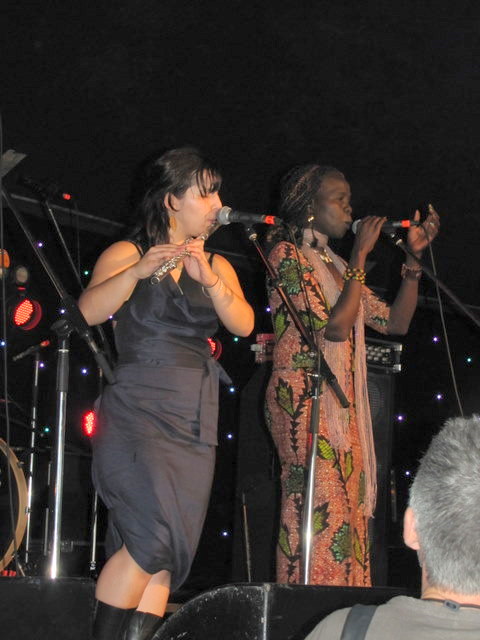 |  |
APRA 17:00 – Ajak Kwai (www.ajakkwai.com)
Very different gig. Ajak Kwai – Sudanese singer/songwriter, storyteller, refugee, human rights activist, who has been living in Australia since 1998. Her supporting group - acoustic guitar and a flute. It is unbelievable and strange how well classical flute blends with Saharan songs...for one hour, Ajak created an African desert in the middle of Australian farm. The most memorable song, in my view, was “Habibi” - a |
Sudanese folk song, sung by women to the men they love. Although this song is in Arabic, but you don't need to know words to sing it. All women joined in with Ajak to sing it all together, each to her own someone. Pity, but my wife was not there :-)
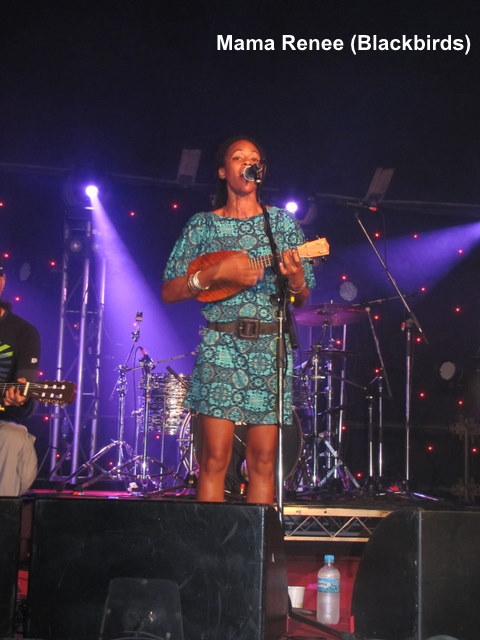 |
APRA – 23:00 – Blackbirds (http://www.blackbirds.com.au/)
Again a nice change of rhythm and style. Blackbirds, a local group made up of two Indonesian musicians Adi and Benhur alongside the stunning African-Jamaican front-woman Mama Renee, were joined by amazing Azo Bell from Old Spice Boys. Fully acoustic set – guitars and variety of ukuleles. I could not even imagine such creative and interesting ukulele solos (played by Azo Bell). This is how Blackbirds describe their music – “Simple and elegant. Like a harmonic bath of honey.... [It] is about making an intimate connection” – and it really makes it. |
They are currently touring with Eric Bibb – try not to miss their concert.
 |
Busking Competition - "Lifeline" - I could not find any information about them on internet (would be very grateful to anyone who could help out here). This isn’t really surprising when you think about it ‑ the average age of Lifeline could be under 15 (look at photo). Don’t let their youth fool you though, ‑all of them are already astute musicians, playing some quite complex original arrangements. |
They have very big potential - watch them grow!
MONDAY - Day of the Bob Dylan T-shirts. It was a baby-boomers delight day – how often do you have Bob Dylan, Jethro Tull and Elvis Costello & the Imposters at the same night and at the same place?...
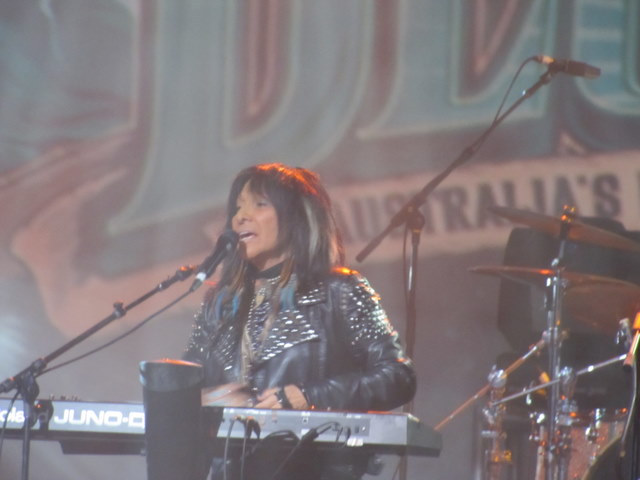 | 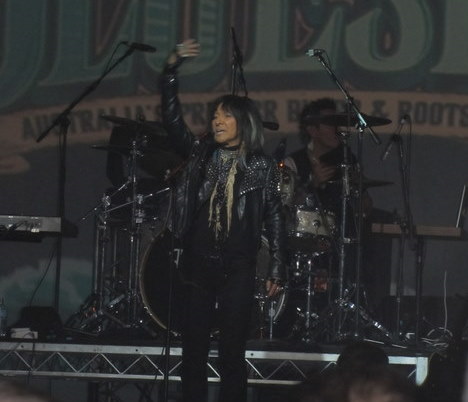 |
Mojo – 17:30 - Buffy Sainte-Marie (http://www.creative-native.com/)
If you don’t know who Buffy Sainte-Marie is - it’s worth your while to check out her biography. A Cree girl born on the Canadian Indian reservation, she has became one of the most prominent indigenous rights and peace activists – |
her song "Universal Soldier" has been accepted as one of the anthems of the worldwide movement. Educator, songwriter, singer, visual artist, Honorary Doctor of several top universities, winner of multiple international awards, she travels the world to deliver her message. It was a real spiritual experience (not a cliché here!!) when she sang a cappella “Boarding school blues” about small Indian girl taken from her parents. Supported by her band of mainly Canadian Indian musicians she also sang material from her latest CD “The Pathfinder”. You should have seen the Nimbin Tribe people dancing their Luna dance on a back-drop of one of the big screens during this concert!
 | 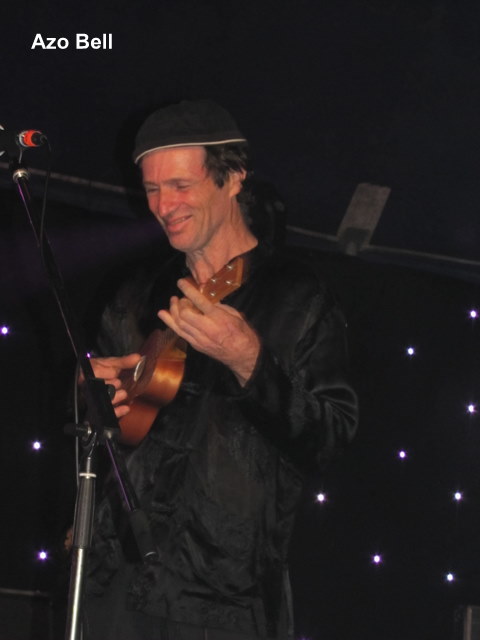 |
JukeJoint - 19:30 - The Old Spice Boys (http://www.myspace.com/oldspiceboys)
This one is to remember. No electronics, no kilowatts, no visual effects – just three spice boys - Azo Bell (ukulele), Billy Milroy (tea-chest bass), Tim Reeves (snare drum). All from Byron Bay. But what a musical class! These guys don’t need high power bells and whistles. With just three instruments (not a single one of them electric :-), the Old Spice Boys were able to tackle, effortlessly, just about |
anything they wanted – Bill Haley, Miles Davis, classical music, blues, you name it! And add to mixture their own stylish and humorous original compositions. Tim Reeves (ex Mungo Jerry and T-Rex) keeps the pace with just one snare drum and Billy Milroy (ex The Sundowners) with complex ‘walking’ bass just on one string, which would keep puzzled many jazz aficionados, set the stage for virtuoso solos of Azo Bell (he is in the Ukulele Hall of Fame in the USA). Delicious!
 | 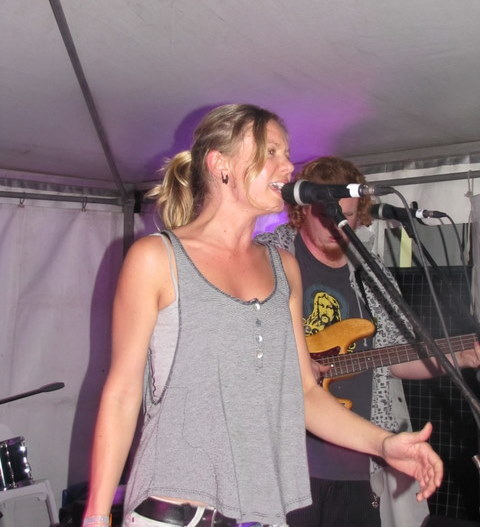 |
Busking Competition – the best of Monday (in my view) were “Pink Zinc” (http://www.myspace.com/pinkzincmusic).
This bunch of young, talented and enthusiastic guys (Harry Nichols – guitar, Shay Cater – drums, James Taylor – keys, Luke Davis – bass-guitar and Sarah Grant – vocal) are from Lismore. All highly professional musicians, Graduates of the Contemporary Music Degree of Southern Cross University, |
they brought together a huge, dancing, moving shaking anima of an audience!
I could add more gigs to my review, but I should stop somewhere. I’ll just add some photos and names/links about less known in Australia yet musicians, which definitely deserve your attention:
Victor Valdes and the Marin Brothers - www.therealmexico.com.au
Osibisa - www.osibisa.co.uk
Grace Barbè Afro Kreol - www.gracebarbe.com
Little Bushman - www.myspace.com/littlebushman
Captain Matchbox Whoopee Band - www.micconway.com
Hank Green’s Blues - www.hankgreensblues.com
Credit needs to go to the organisers of BluesFest. It was very touching to see how much attention they paid to the needs of people with disabilities (every marquee had a dedicated viewing area for them). There was also a very active, hard-working group of volunteers and staff. Well done BluesFest!
It is impossible to bring to life the experience of these several days in just a few words. The music, the atmosphere, the energy, the talking and dancing with strangers all tremendous and indescribable. Next year - pack your bags, take your friends and go to BluesFest and experience it yourself - I’ll definitely be there.
|
by Vlad Gilbourd, May 2011
|
| Back to Index |
|
 |
Amphibious - Alive & Breathing (Independent/www.amphibious.net.au)
|
A clue to the diverse influences on this live album from Sydney quartet Amphibious comes from track two, Passacaglia: a slow dance music originating in Spain and Italy in the seventeenth century. The form incorporates three beats per bar, usually framed over an ostinato. That sounds a long way from jazz, but after a classical opening featuring Ollie Miller on cello and a mediaeval drum beat from Jamie Cameron, improvisations from Richard Maegraith’s tenor sax and Aaron Flower on electric guitar are unmistakeably 21st century jazz-inspired. The unusual instrumentation works perfectly for this collection of genre-defying compositions. There are aspects of soft rock in Mysterious Insider, while Life of Our Life is a beautiful, blues-imbued ballad where the cello moves from bowed to pizzicato under spreading guitar chords as Maegraith’s tenor propels, arching and building. Epicure begins with guitar, pizzicato cello and drums laying out a strict-time four/four pattern developing into a livelier eighth note grounding as the tenor swoops and soars above. The sax climbs and falls gently to open D Minor seguing into runs, tremolos and staccato phrases as cello and guitar provide a substructural wash and the introduction of steady drumming could have come directly from the baroque composer Pachelbel. The atmosphere throughout this highly original album is of jazz-infused classicism delivered in fascinating moods from floating tranquillity to surging excitement
   
|
by John McBeath
Previously published in The Australian April 2011 |
| Back to Index |
|  | Jane Irving - Beams (Independent/www.janeirving.com)
|
Every so often an album appears without a marketing campaign, slipping almost unnoticed into the vast ocean of Australian CDs, and when heard with neutral expectations, suddenly springs to life with lavish talent and striking originality. Such an album is this release from Sydney vocalist Jane Irving. Thirteen tracks, some slightly lesser-known, carefully selected songs were recorded over two different sessions with a variety of top quality musicians, including amongst others Matt McMahon or Michael Bartolomei on piano, trumpeter Don Rader, bassist Brendan Clarke, and James Waples on drums. Irving’s apogee of swinging expression and vocal range on Horace Silver’s Doodlin’ alone makes this album worth having. Amongst several beautifully delivered ballads is a moving interpretation of Kurt Weill’s Lost In The Stars, featuring a sensitive solo from Rader’s flugelhorn. The album opens with a bouncy version of Frank Loesser’s I Hear Music, and includes some smart scat exchanges with Clarke’s acoustic bass. A slower, languid pace is ideally suited to McMahon’s arrangement of Stolen Moments, a complex piece for vocalists, but enchantingly interpreted by Irving, while still holding a grooving pulse. The Rodgers and Hart standard Everything I’ve Got Belongs To You illustrates Irving’s ability with phrasing and long held notes. Her style is very reminiscent of Anita O’Day: the same expressive phrasing and the facility to slide almost unnoticed into sophisticated scat
   
|
by John McBeath
Previously published in The Australian April 2011 |
| Back to Index |
| 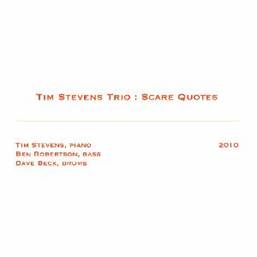 | Tim Stevens Trio - Scare Quotes (Rufus/Universal RF 098)
|
In this fourth album for Rufus, Melbourne trio led by pianist Tim Stevens continues with its previous styles and concepts. It comprises six of Stevens’s original compositions premiered at the 2010 Wangaratta Jazz Festival, plus five collective improvisations including some esoteric titles. The idea here is to include both pre-structured and spontaneous forms on one recording, where previously each has been performed on separate albums. Stevens’s originals are captivating – intelligently melodic, and cohesively understood by Ben Roberts’s bass and Dave Beck’s neatly ornamented drumming. Bluesosphere Blogs, a topical title, has a lively discursive sensibility employing a fast-running theme which scurries to a climactic interchange of striking piano chords and busy drums. Stevens’s Lu Bird opens in ballad mode but soon moves into a swinging excursion full of melodic narrative and a rhythmic underscoring drive from the drumkit. The five spontaneous pieces are of course, more abstract and most are totally out of tempo: Wiseband and Huff wanders introvertively, allowing each member variously to take centre stage, where the piano flows and shimmers. Another unstructured, tempo-less piece Initiatrix, conveys a sombre mood with its bass-end piano notes while Letters and Diaries features interplay between high treble piano tremolos and Roberts’s slightly under-recorded bass. This is an interesting concept interspersing written forms and autogenetic works from three skilled, long-term musical associates
   
|
by John McBeath
Previously published in The Australian April 2011 |
| Back to Index |
|  | James Osborne Jazz Collective - Playtime (Newmarket Music NEW3290.2)
|
Canadian drummer James Osborne, Melbourne-based since 2008, has assembled three different pianists, an organist and three bassists for this album to augment a core trio of drums, tenor sax and trumpet. The style is very much mainstream, featuring lesser-known compositions from various musicians Osborne admires, and one original ballad. The front line consists of Christophe Genoux on tenor and trumpeter Brae Grimes who open in a medium tempo, alternating between a latin rhythm and a straight-ahead groove attack on a Woody Shaw original, The Organ Grinder. That opener includes a lengthy, competent trumpet solo, a standout bass solo from Tamara Murphy and a more staid one from pianist Simon Mavin. Duke Ellington is represented by Mount Harissa which has Mark Fitzgibbon’s piano expertly driving the trumpet into a more effective solo. The trumpet displays a more commanding presence in Alter Ego where the tenor also features well and Rory Clark on piano keeps it all flowing. More Today Than Yesterday introduces Kim Kelaart on Hammond Organ to provide momentum for a relaxed tenor and an elemental muted trumpet. The one original piece, How Could I Have Known is a pretty ballad given languorous Coleman Hawkins style treatment from Genoux’s tenor, while Helen’s Song benefits from Fitzgibbon’s piano despite repetitive tok - tok drumming, but Gareth Hill contributes productive bass work
  
|
by John McBeath
Previously published in The Australian April 2011 |
| Back to Index |
| 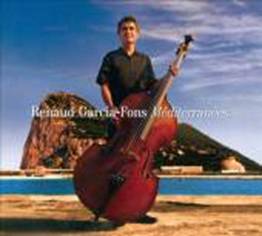 | Renaud Garcia-Fons - Mediterranees (Enja ENJ 9563 2)
|
With a jazz history of working with greats like Kenny Clarke, Garcia-Fons will be largely unknown to Australian audiences but this technically brilliant French bassist is known as the “Paganini of the double bass” and should make an impact with his eighth release as leader. About 10 years into his relationship with the bass he re-modelled and re- tuned the instrument with a fifth string. The resulting resonances in both pizzicato or arco is astounding and the diversity of sound (the bass can easily be confused with the cello or even at times the viola) is matched only by the variety of Mediterranean musical ports he visits in this recording. This is not a cultural sampling exercise, but there is ample layering and I suspect re-layering which may be off-putting for some but for mine, it does not intrude on the essence of each message. From Spain to Northern Africa, the Middle East, Greece, Turkey and Italy, each piece, whether melancholy or joyous, is embellished with a variety of the regions traditional instruments such as the lute, the bouzouki or the oud. There are 18 gorgeous melodies or deeply rooted grooves some of which are teasingly truncated leaving you wanting more.
   
|
by Peter Wockner
Previously published in Limelight April 2011 |
| Back to Index |
|
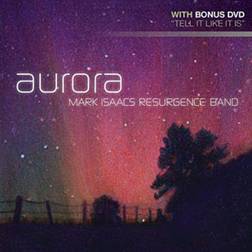 |
Mark Isaacs Resurgence Band - Aurora (Grace Music)
|
Isaacs’s compositions flood the senses and the pianist is playing with a passion that stands out in Australia today. The passive ‘Good Tidings’ and the mournfully lyrical ‘Threnody’ offer textural contrasts against high energy pieces all of which constantly compel with dynamic interplay often woven into smart arrangements whilst the title track exposes hints of melody from traditional Jewish sources. Complete with a ‘live’ DVD performance, it’s insightful to compare aurally and visually the ‘live’ energy with the ‘studio polish’ of ‘Resurgence’ that includes James Muller – guitar, Matt Keegan – saxophones, Brett Hirst – bass and Tim Firth – drums.
   
|
by Peter Wockner
Previously published in Limelight April 2011 |
This album from Sydney pianist/composer Mark Isaac’s now well-established Resurgence Band generously contains a bonus DVD of the 2009 concert recording of their previous CD, “Tell It Like It Is.” Isaacs’s strong classical background and influences are noticeable in all of the Aurora originals and his piano technique is as brilliant as ever. Curiously his top-flight sidemen, guitarist James Muller, and saxophonist Matt Keegan sound somewhat contained, unlike the explosive work both have exhibited on their own recordings as band leaders. There are still some impressive solos, notably Muller’s rocket assisted lift-off on the travelling blues piece, For The Road, or Keegan’s rock referenced tenor sax on Emergence. Drummer Tim Firth takes a driving solo towards the end of For The Road and bassist Brett Hirst rides the lines expertly in his solo in Aurora. The title track features a semi-classical piano opening which soon develops a rhythmic essence as the remaining instruments emerge and the piano goes into overdrive for a solo that retains both a strong pulse and classical influences, while some smart drumming builds a climactic conclusion. Although the playing throughout is flawless, it could be that these arrangements are just a little too tight and controlling.
   
|
by John McBeath
Previously published in The Australian May 2011 |
| Back to Index |
| 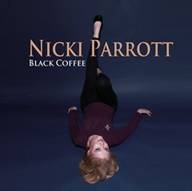 | Nicki Parrott - Black Coffee (Venus Records VHCD 1041)
|
This is arguably the best album yet by versatile vocalist-bassist Nicki Parrott for the Japanese label as she again shows her affinity for the great standards of American popular music in covering songs mainly associated with Peggy Lee and Julie London. As usual her supporting cast is all class including her impressive reed-playing sister Lisa, pianist John Di Martino, and tenor saxophonist Harry Allen, a plus on any recording date. Highlights? There are many: shades of Slam Stewart and Major Holley in her improvised humming as she bows the bass on Dark Eyes or accompanies herself on Fever. Impressive.
   
|
by Kevin Jones
Previously published in Limelight April 2011 |
| Back to Index |
|  | “Buck” Pizzarelli and the West Texas Tumbleweeds - Diggin’ Up Bones (Arbors ARCD 19394)
|
Guitarist Bucky Pizzarelli, a master of melody and rhythm, recalls the era of classic Western swing something he and his sons John (guitar) and Martin (bass) had planned for many years. With, among others, Aaron Weinstein (violin), country star Tommy White (pedal steel guitar) and vocalist Rebecca Kilgore they also pay tribute Bob Wills and His Texas Playboys who did so much to popularise this amalgam of jazz and country music in the 1930’s and 1940’s. Not for the intellectual and narrow-minded, this is entertaining toe-tapping music summed up by John Pizzarelli’s breezy original Turkey In The Raw. Recommended.
   
|
by Kevin Jones
Previously published in Limelight April 2011 |
| Back to Index |
| 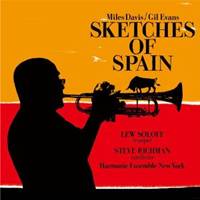 | Lew Soloff and Steve Richman - Sketches of Spain (Sheffield Lab SL10089)
|
That this album stands on its own merits against one of the landmarks of modern music is a credit to the dedication of trumpeter Lew Soloff and conductor Steve Richman and his 19-piece Harmonie Ensemble New York. Released last year to mark the 50th anniversary of the classic Miles Davis and Gil Evans collaboration, their sympathetic interpretation makes it a worthy successor, still faithful to the original but adding new depth and colour. Soloff, who was surprised to find that so much of the original was written not improvised, plays superbly and Richman makes sure Evans’ charts sound even better. A remarkable achievement
    
|
by Kevin Jones
Previously published in Limelight April 2011 |
| Back to Index |
|
|
